Helen Walsh's Blog
August 15, 2025
August. Edinburgh.
As my friend Clare says, come August I turn into a lemming and instinctively migrate back to Edinburgh for festival time.
People are always curious what the experience is like. So I thought I’d keep a diary this year, and share excepts with you. This is Part 1.
Thursday. London.6am. Land Heathrow Terminal 5 on British Airways. Didn’t sleep even five minutes. I’ve finally given up the hope Air Canada will resurrect the direct day flight from Toronto to London. In October, I’ll test out BA’s JFK-LHR flight. A stopover in New York to visit friends feels like a good option.
But still buzzed by the horizontal strip of pink that had teased at the cloud line, sandwiched by golden hues. Is there anything more beautiful than dawn at 40,000 feet over the Irish Sea?
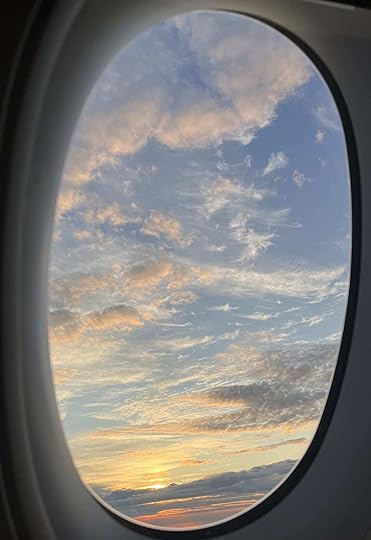 Not the dawn shot as you can tell - I was too enthralled to pick up the phone - but London sky on landing.
Not the dawn shot as you can tell - I was too enthralled to pick up the phone - but London sky on landing.Our Scottish pilot could have been rehearsing for a one-man Fringe show.
We are soon to depart to London Heathrow and if that is a surprise to you, now would be a good time to say it. We have a nice juicy tailwind but Heathrow doesn’t open to 6am so that is when we will be landing.
Vegetarian pre-ordered meal complete rubbish (why can’t all airlines be like Air France?). But new TM teacher David was right – meditating on take-off and landing makes you feel calmer about being locked in a tin can with no escape. And, unlike a G&T, there’s no yuck afterward.
7am. Heathrow Express to Paddington, black cab to the Haymarket Hotel. Room not ready for check-in. Eggs and avocado toast, then a long walk through Trafalgar Square, St Martin’s-in-the-Field, Piccadilly, Leicester Square, SoHo, St James. So tired my peripheral vision is gone.
8:30am. In a bathrobe and slippers, dragging out my departure from a treatment room where the hotel has kindly allowed me to shower. The bastard guests aren’t checking out of their rooms very quickly, so I finally dress and set myself up with papers on the couches. (Note to self: bring swim suit next time.)

11am. Nudged awake by a concierge. I seem to have toppled sideways and fallen asleep. Check cheek for signs of possible snoring as I follow him upstairs. Luggage already in my room, personalized welcome note, water and aromatic candle waiting. Tuck myself up into the amazing bed and I’m gone.

3pm: Slept, dressed and on the prowl again. First stop, rooms 41-46 at the National Gallery (Impressionists and Post-Impressionists). The crowds almost as large and disengaged beyond their Instagram-able moment as in The Louvre. But I’m able to visit my old friends on the wall, then head down to the café for tea, followed by a quick nip through Hatchard’s Bookstore.
7pm: Silva Restaurant, Mayfair. A members dinner of the Trouble Club. I joined this speakers group in 2020 started by a young woman named Ellie Newton. Membership dues are very modest, and I admire her commitment to dialogue across ages, topics, backgrounds and political ideologies.
Tonight’s conversation focus is ‘beginnings and endings.’
I’m seated with Sharon, Calcutta-born and raised, long-time Londoner, originally a singer then trained as a lawyer in her thirties (to the chagrin of her artistic family). Christine, born in Brazil, raised as a teenager in the US, been in London for decades; senior financial compliance executive. And Kiran, who divorced her husband, moved to London and launched a podcast for women reinventing themselves after fifty.
A fascinating conversation and new friends; we’ve already got an email group going.
Nothing I love more than walking in London at night. Head back to the hotel via Regent Street, Picadilly and down Haymarket. A stream of humanity (truly global in nature) strolling and eating cream at 10pm.
9:30am. Breakfast (eggs and avocado toast again) at 45 Jermyn, after an early morning walk through St James and Green Parks saying hello to the water fowl.
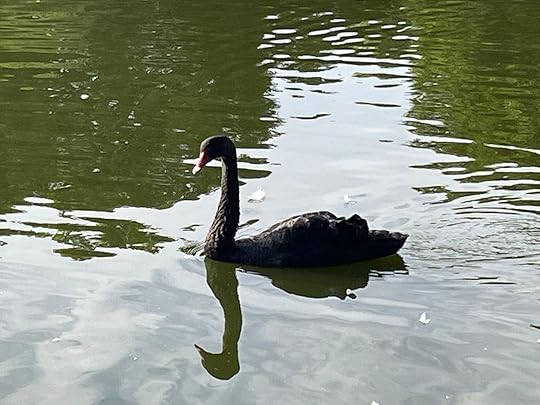
Now, I’m listening to black swans of another sort. I come here to eavesdrop on the finance bros, British style. (Modulated voices, higher level of analysis.) Asked the waiter to sit me right next to my targets; they are sufficiently self-possessed to not notice anyone else, so I lean in.
One is culturally Chinese, the other Caucasian. Same posh accent and vernacular. The first seems to be the boss, owner of a hedge fund. He feels the City is on its knees post-Brexit, that Covid lockdowns decimated personal initiative, and that an inheritance tax to alleviate the housing crunch and financial inequity isn’t such a bad idea, provided a) it’s under 35% and b) the Duke of Westminster is first in line to pay.
Oh, and China’s got a massive liquidity problem no-one’s talking about which may bring down the global economy.
12:30pm. Now she’s checked out and with ten hours to kill until her train, the concierge has set up Ms Walsh in the conservatory with some tea.
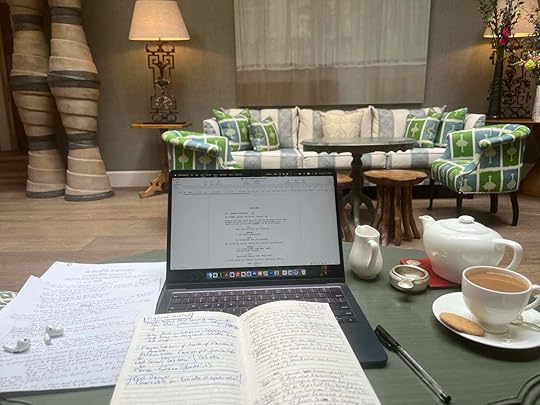
5pm. More tea, this time at Picturehouse Central with Evan Placey, a playwright and screenwriter who I met originally through DD. Great to catch up and debrief about the TV industry. Evan is as funny and supportive as always. He’s off back to Ontario for a family cottage visit as I head north to Edinburgh.
9:50pm. Why won’t this interminable play [Til The Stars Come Down] end? Five stars by all the major outlets. Certainly insightful about family dynamics and very funny, but I can’t bear women screaming at each other on stage. At least I only paid £25 for a rush ticket.
It’s running long, and I’ve a taxi booked at my hotel to take me to the train. So I bail (guiltily, happily); the strum and drang of the sisters will have to continue without me.
11:45am. Ahh, the Caledonian. Tucked up into my wee bunk bed reading, as the train slowly rocks out of the station.
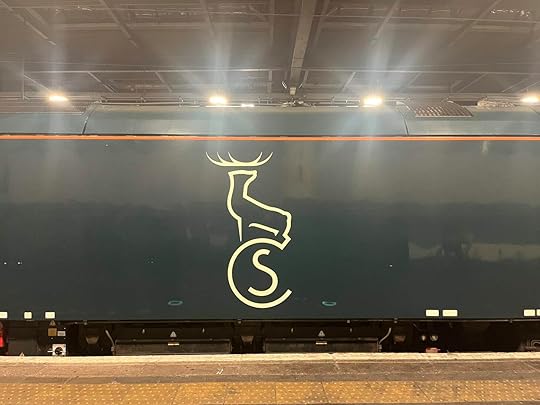 Saturday. Edinburgh.
Saturday. Edinburgh.6:30am. Train attendant banging on my door to deliver the oatmeal and fruit. Open the blind. There she is, Scotland. Half my DNA sings as fields of heather interspersed with stone cottages roll by. And I think of my mom, always. ❤️
9:10am. Roll off the train at Dalmeny station. Light drizzle. My friend Clare and her wonder dog Ziggy meet me, we walk through the beautiful Ferry Glen woodlands to the high street where her 275-year-old stone house (St Helen’s!) overlooks the water.
It’s Ferry Fair in South Queensferry. The town’s excited. And decorated, with a stage awaiting the crowning of the Queen (a local child) and her court.
The first recorded historical mention of this event dates back a millennium. During the reign of King David I in the 12th Century, Queensferry had the status of a burgh town and as such was allowed the privilege of holding a weekly market and an annual fair.
It’s a lovely tradition but this year I’ll miss it. Clare and I are right into the thick of it with two shows at the EIF (the main festival as the Scots call it).
We hoof it through the crowds to catch the Lothian Bus#43 into Edinburgh (30-45 minute ride depending on traffic). But Ferry Fair has run roughshod over schedules, so we hightail it further to the train station.
That’s a 15-minute journey into Edinburgh Waverly – the only train station in the world named after a book series. And whose massive stone clock outside is set five minutes early so travellers don’t miss their train.
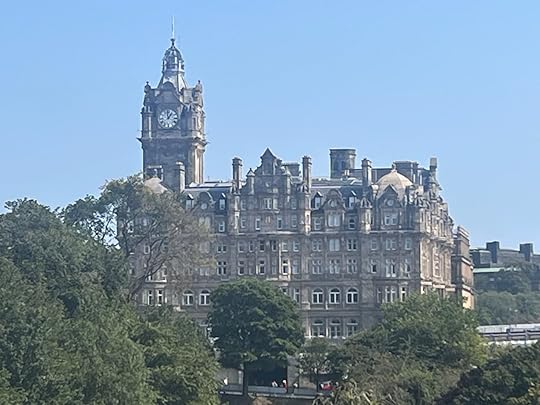
Clare has a genuine interest in others and thus excels at casual conversations. It’s really lovely.
There’s Keith who runs a children’s school program and is learning guitar. And a couple in their 70s/80s who are heading into the city centre for four comedy Fringe shows that day, of a total 41 shows they are taking in.
And it’s Oasis time, so bucket hats everywhere.
3pm. Interval of Make it Happen – a play about the financial crisis of 2008 and the rise/fall of the biggest bank in the world, the almost 300-year-old Royal Bank of Scotland. The wine-drinking Edinburgh audience is abuzz.
They came to see Sandy Grierson play Fred the Shred (the Scottish CEO who had the nerve to be an outsider from Paisley AND destroy the bank). But the fact that former Prime Minister Gordon Brown is both a character in the play and an audience member is exciting.
Nothing I love more than juicy political satire on stage. James Graham, the playwright, has taken artistic liberties with movement and motion and Adam Smith – as one does in creating dynamic theatre that aims for greater truth not reportage – which will no doubt earn him criticism. But I loved it.
5:20pm. Politely push our way through the enormous crowds in the blazing hot sun (not often you say that about Edinburgh, but it’s heat wave time), to get to our next event. An opera in concert of Mozart’s La clemenza di Tito at the grand Usher Hall.
Quick stop for a take-out veggie wrap from a Turkish café, and we’re in the throngs of the Grassmarket. Set in the shadow of Edinburgh Castle, the long street dates back to medieval times. Once an area of markets, riots and public executions, it’s now restaurants, woollen shops and street performers.
Up one of the city’s endless stone staircases that connect Old Town with New, and we arrive at our next venue, swallow half our wrap with little time to chew, and slide into our seats for the glorious music of Mozart’s final opera.
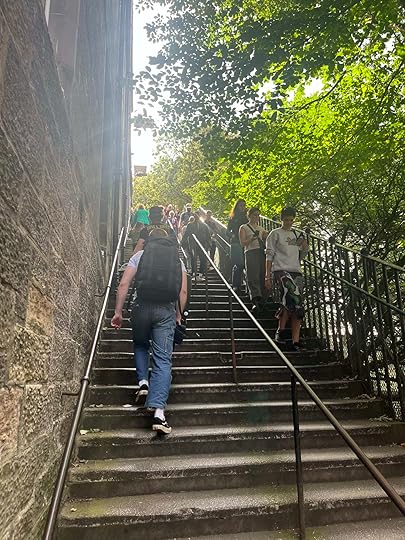
Almost three hours later, Clare, Mark (her husband has met us there) and I fall into an Uber to take us back to South Queensferry. We’re agog at the talent of Hera Hysesang Park who sang Servilia.
We’re also busy googling what happened to Fred the Shred. Spoiler alert: he made out just fine with his annual £600,000 pension, exclusive golf memberships and intact self-worth.
(Did I mention he brought down the bank established by royal charter in 1727?)
Sunday. Edinburgh.10am. No rest for the wicked. We’re up and out the next morning, back on our beloved #43 bus. It’s our first Edinburgh International Book Festival events. We’re seeing the esteemed actor Dame Harriet Walker on her new book She Speaks: What Shakespeare's Women Might Have Said, hosted by Jackie Wylie, Artistic Director of the National Theatre of Scotland.
Harriet gives several readings and I decide to buy the audio book, which she narrates.
Back outside in the gardens, the sun is shining. AGAIN. We eat halloumi and falafel wraps from a food truck before heading back inside for our next event with Nobel Laureate Abdulrazak Gurnah, born in the Sultanate of Zanzibar before moving to the UK in the 1960s as a refugee during the revolution.
4pm. Fifteen minutes left in this event and the crowd is politely steaming. Moderator Richard S. has epically failed his job. First, he hasn’t understood he’s not the show. He may be one of the world’s pre-eminent academics, but he’s not the reason we’re here.
And secondly, he wilfully jettisoned the audience Q&A. That is not just not on here in Edinburgh. The festival staff will hear about it. Gurnah himself seems embarrassed. But the signing queue is long at the bookstore, so all’s well that ends well.
Stay tuned for Part 2!
July 7, 2025
The Hills Are Alive with the Sound of Pitching.
I can see why the Von Trapp family sang their way to a permanent home in Stowe, Vermont after escaping the Nazis. Those Green Mountains are some kind of beautiful. (Edelweiss... Edelweiss...)
In early June, I travelled to Vermont for the four-day intensive Stowe Narrative Labs, which brings together top emerging screenwriters, filmmakers, and creative producers to develop a project, learn craft and pitching skills, and build a strong network of peers, mentors and colleagues.
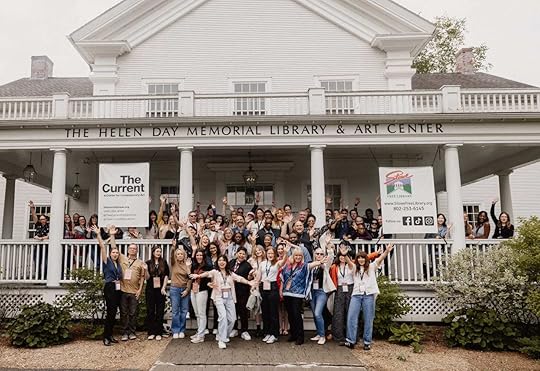 Photo: Jesse Schloff
Photo: Jesse SchloffAnd what an intense, collaborative experience it was.
Stowe Labs, like Sundance Labs, runs annual competitions to select participants. I chose to apply to Stowe because it has a strong television writing component, an excellent reputation and robust alumni programs.
‘You need to be where the industry is’ is an adage you frequently hear when studying screenwriting. And that means Labs, Writers Conferences/Competitions (often attached to a film festival), Film Markets, etc.
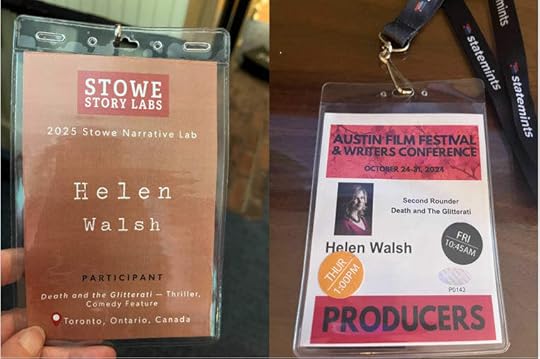
It’s a relationship business and as a newbie, you need to build them from scratch. While breaking into the industry has always been hard, it’s even more so now, for several reasons.
The collapse of the Peak TV (generally considered to be 2013 to 2022 when you couldn’t swing a cat for the amount of original content being commissioned by the streaming services). Covid, another nail in the coffin of a broken film distribution system. The 2023 Writers Guild and Actors Guild strikes in the US. The changing nature of consumption by audiences.
More than half of all screenwriters are out of work and looking, while the size of writers rooms have shrunk. (They were always larger in the US, employing 12+ writers a show. In Canada, they are smaller and the UK hasn’t traditionally used them.)
Corey Trent Ackerman, a LA-based manager/producer, says films have begun to be greenlit again in the past six months, although television remains difficult. He recommends his TV writer clients now have a film script in their portfolio, alongside 4-5 pilot scripts for original shows they have created.)
But all cultural work is challenging. And while novels have lower barriers to entry than writing TV (the latter costs tens of millions and there is no independent distribution platform), finding a sizeable audience for a fiction writer is hard. So you need to write what you love and let the process be the pleasure.
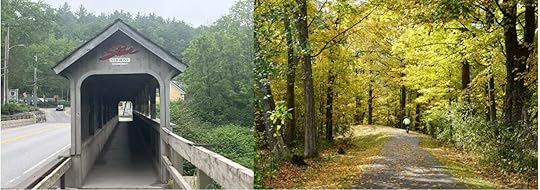
When I was accepted into Stowe in March, media stories abounded about the difficulty of crossing the US border. Whereas once upon an election ago, I might have driven down (about 7 hours). Instead, I spent about the same amount of time flying west to Detroit, only to connect back east to Stowe.
When I nervously got to Toronto Pearson, there were only a handful of us preclearing US customs, versus the normal long lines. The agent couldn’t have been friendlier, asking me questions about my writing and suggesting I stay longer in Vermont to have a vacation.
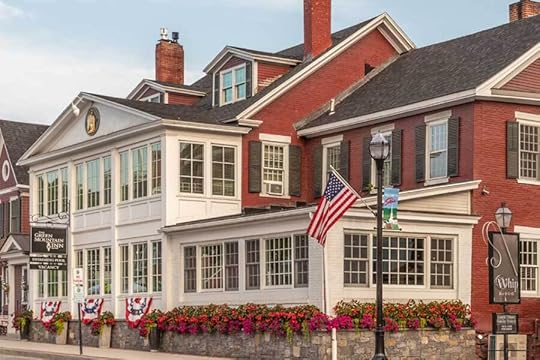
The first night, the bartender in my hotel, the charming Green Mountain Inn built in 1833, apologized to me as a Canadian on behalf of Vermonters. Vermont did not vote for President Trump, he reminded me. (In fact, it was the state which gave the Democrats their largest margin win in 2024.)
“We miss our Canadians,” the bartender said, voice trembling with emotion. (Vermont and Québec share a border.) “Thank you for coming.” A sentiment I heard repeatedly throughout this small town.
Vermont was an independent republic for fourteen years before joining the United States; that independence is reflected in their political culture and values.
Hometown tours – a local alternative to Uber – organized the pick-up of Lab participants who came in from across the US, four of us from Canada, as well as the UK and Ireland.
Keith was waiting to drive me the forty-five minutes from Burlington airport to my Stowe hotel; along with the ALSO sisters, twin horror filmmakers originally from Spain who live in Salt Lake City and write, direct, produce and live together.
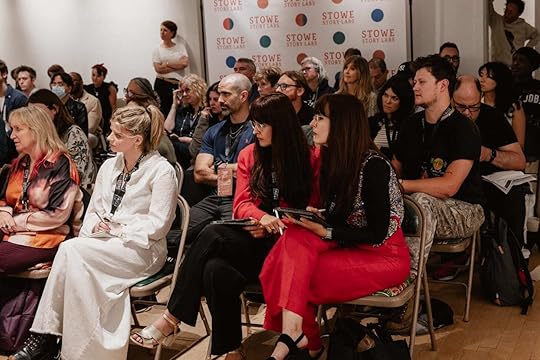 Photo: Jesse Schloff
Photo: Jesse SchloffTurns out Keith self-published a memoir in 2017 after Jesus saved him from death. (And in fact, Jesus was right there on the dashboard in the form of a figurine.) He spent the drive interrogating me about how to find a publisher for a revised version.
When we got out, I apologized to the twins for dominating the conversation. “Don’t be ridiculous,” they said in unison. “We spent the whole drive taking notes. We’re going to ask for your help, too.”
As part of Stowe Narrative Labs, you are assigned to a peer-to-peer group of 4 screenwriters with whom you meet daily to provide feedback on each other’s scripts.
My group – Darren, Ruby, Kim and me – came from different backgrounds. Darren had spent decades running some of the largest advertising agencies in the world before pivoting to screenwriting a couple years ago and relocating from NYC to LA. He won Final Draft Big Break (one of the top 5 screenwriting contests in the US) with his first film script and writes very funny, edgy comedy.
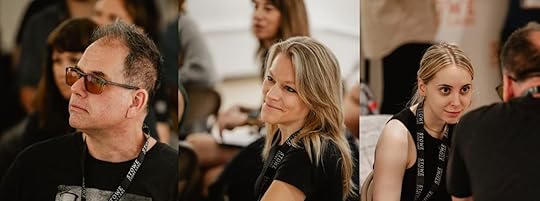 Photo: Jesse Schloff
Photo: Jesse SchloffRuby, a New Yorker in her 20s, works as an intimacy coordinator for film/tv and writes up a storm. She’s particularly interested in animation, although the project she brought was sit-com. She’s placed in several contests over the past year.
Kim lives two hours outside Seattle. A neuro-biomedical engineer with a patent on a brain computer interface device, Kim is also a writer and director, and a video game and Magic (card game) designer. She, too, brought a half-hour sitcom to the Lab.
And I was there with DEATH AND THE GLITTERATI, a serialized darkly funny thriller whose first season is adapted from my upcoming second novel.
I really enjoyed my group. Their critiques were excellent, and we’ve continued our peer mentoring digitally – reading and providing feedback to each other. Stowe places an intense focus on alumni keeping connections to the organization and to each other.
There is a dedicated mail list, Facebook page and Slack channel. Community job board, an alumni map of the world so you can connect when travelling, organized meet ups and promotional support at film festivals, a film channel, automatic entry to their writer retreats, labs and writing programs and more. They also offer fiscal agency for select alum projects (to flow tax deductible donations or sources grants).
My Toronto writing community is terrific. But I realized while in Stowe that it’s primarily literary, given my background. So if there are any screenwriters reading this who want to have a coffee date, DM me!
(Ditto for those travelling to attend TIFF, Content Canada and/or Access Canada Summit in early September; I will be at all three.)
Edinburgh + Department QNext month, I’m off once again to the Edinburgh Festivals. A shorter trip than normal, but I’ll be grateful to be back in a place I love so much. To have tea with my friends Clare and Mark in their beautiful back garden. And to fill my creative brain with author talks, theatre, opera, dance and film.
Plus two days in London enroute for some meetings and to catch up with friends.
Speaking of British television (and why not, the writing is so good). I binge watched Department Q recently on Netflix.
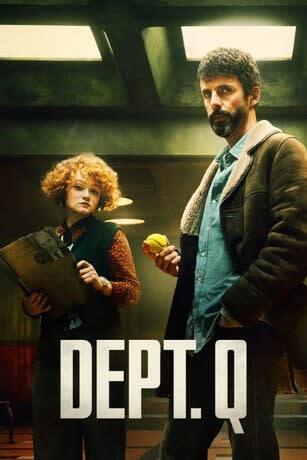
The writing and acting is superb, and it’s rare in North American television that you get such an asshole character whose redeeming qualities emerge very slowly.
But having said all that, there was something vaguely odd about it, and it wasn’t until I read about the show, that I understood what had disquieted me (beyond the moments that, as a claustrophobe, I had to fast-forward through).
It’s based on the book series by Danish writer Jussi Adler-Olsen but relocated to Edinburgh for this adaptation. (There’s also been a successful Danish film series and the book series itself has sold into 30 countries). Crime travels so well across different territories because it is ultimately about larger sociological questions.
But the brutality of Nordic Noir doesn’t comfortably fit a Scottish environment, at least not for me. And in age where we are seeing IP adapted across borders, I find it interesting to consider how sensibilities transpose – or don’t – from community to community.
And one final recommendation before I go. Michael Connelly is a terrific crime writer. His series include Harry Bosh, Mickey Haller (the Lincoln Lawyer) and Renée Ballard (debuting as a new TV series on Prime this week).
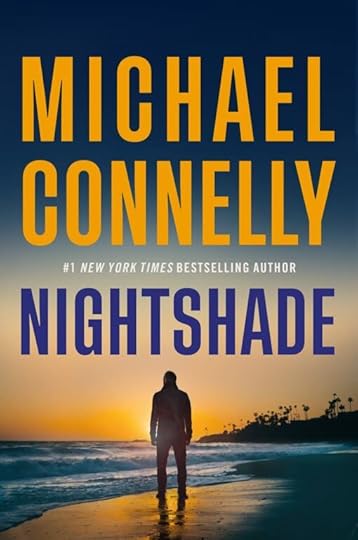
I just read Nightshade where he introduces Detective Stilwell, a cop outlawed to Catalina Island after his refusal to look the other way at departmental wrongdoing.
I’ve always wanted to visit Catalina, 35km out from LA and accessible by ferry. Those kind of small, insular communities are popular locations for detective series. Often, these mysteries are ‘cozy.’ Not true for Connell and for that I was glad. I highly recommend it.
Bye for now. Thanks for reading this thirty-fifth edition of Letterbox! Until next time, friends, which will be sooner than the four-month gap from the last newsletter.
It was a crazed spring writing and also organizing a 20th anniversary gala for Diaspora Dialogues. Oh, and I fit in a little trip to Paris and the Cote D’Azur to celebrate my birthday, which I will write about in a future newsletter.)
March 1, 2025
Bearish AND Bullish on Art
When my sister and I were children, my mother Jessica often sang the Teddy Bear Picnic song. It’s been popular in the UK and Ireland since it was written more than a century ago. (My mother was Scottish.)

Jessica loved her bears – and her children – and frequently bought stuffed ones. My childhood bear, according to family legend, originally came with my three older sisters and parents on the Empress of Canada ship from England when they emigrated. But in a succession friendlier than that of the Roy family, he eventually became mine.
Letterbox: Bookish & Filmish is a reader-supported publication. To receive new posts and support my work, consider becoming a free or paid subscriber.
Brown Teddy was by my side when I decamped to a University of Toronto residence room (where my floor-mates kidnapped him and held him for ransom), on trips around the world, through multiple changes of address. Sadly, friends, Brown Teddy met his end in the fire that gutted my house in 2021.
Last month, was the two year anniversary of my mother’s passing, and I thought about her frequently as I trudged through the slush in Berlin encountering the fiberglass Berlin Buddy Bears, the city’s mascot meant to promote ‘tolerance’ and cosmopolitanism.
The 75th BerlinaleFounded in 1951 in the ruins of post-World War II Germany, the Berlinale is one of Europe’s Big Three film festivals (alongside Venice and Cannes), and one of the top five in the world (add in Toronto and Sundance).
Hundreds of films are screened at multiple venues mostly around Potsdamer Platz, a symbolic if unattractive area of the city close to the Brandenburg Gate and the Reichstag (German parliament). Filmmakers, actors, celebrities and producers flood in; festival parties and meetings are had; prizes are given out.
Being the most political of the film festivals, there were of course speeches, demonstrations, denunciations – and a little more glamor than usual for Berlin, given the new tenure of festival director Tricia Tuttle, who made the jump from the BFI London Film Festival a year previous.
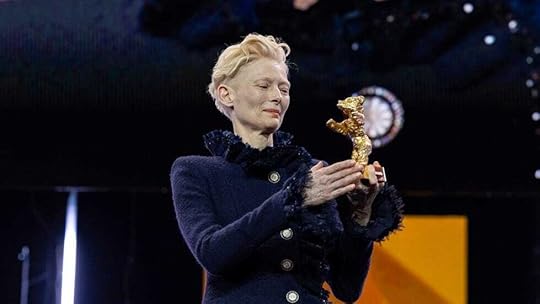
Tilda Swinton, accepting the Golden Bear Lifetime Achievement award, denounced “state-perpetrated and internationally-enabled mass murder [that] is currently actively terrorizing more than one part of our world” without naming specifics.
There were speeches against Israel, renewed calls of antisemitism against the festival and a red-carpet vigil for Israeli actor David Cunio who was abducted by Hamas on October 7 (and still held hostage alongside his brother; his wife and three-year-old twin daughters were released earlier). Cunio was the subject of a movie in this year’s festival.
The spectre of the German election hung over the festival (and all over the city in competing political signs). Europe was reeling by the pro-Russian moves of President Trump and their implications for future security on the continent. Every American delegate I met started by apologizing for the reckless and dangerous actions of their president.
In the toilet stall, an audience member put up notes saying Friedrich Merz, likely to be next German Chancellor, must never partner with the AfD (the far-right party which doubled its share of the popular vote from 10-20% in the election).
After the screening of the Romanian political satire Kontinental ’25 which won the Silver Bear for best screenplay, the director Radu Jude wrote FUCK PUTIN + TRUMP across his official portrait.
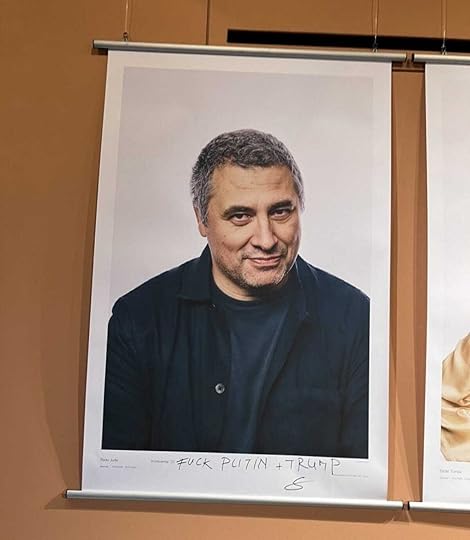
As the festival opened, Tricia Tuttle set out its position calling for a mutually respectful dialogue around even the most divisive issues.
“We value and protect free speech, but as we have seen in online spaces all over the world, an advocacy for free speech alone is not enough. We have to bring kindness, care about facts, and the desire not only to speak but also a hope that people might hear us.”
There were of course calls to boycott the festival in advance. Few filmmakers did. I admired the Berlinale’s desire to stand up for dialogue while simultaneously protecting the right of artists to freely express themselves, within the context of German hate speech law.
Book and film festivals are part of fragile ecosystems that look sturdier than they are (at least to those unburdened by their production). As we’re beginning to find out with literary festivals in the UK and Canada, pull out some of the bricks and Humpty Dumpty begins to fall.
At a time when culture faces strong headwinds of censorship, funding, broken distribution models and changing attendance patterns, it’s a consequential approach to dissent.
European Film Market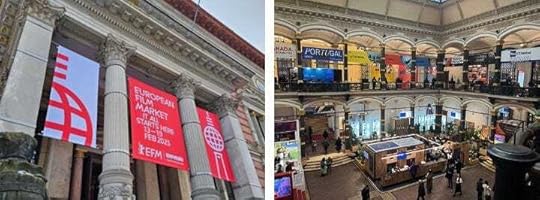
Simultaneous to the Berlinale, the European Film Market takes place during the first week of the festival. Drawing 10,000 industry delegates, the EFM is a large trade fair where people meet to sell, buy, pitch or screen films and television series.
The picture above was the morning before the opening in Gropius Bau, the main exhibit hall with four floors of meeting rooms, lecture theatres and trade exhibition booths by every country. Within the country sections, individual production companies and film commissioners had their own desks or tables.
Additionally, most of the workshops, panel conversations and screenings took place at other nearby venues, with shuttle buses to ferry you between.
I had a great series of meetings, mostly with European production companies who specialize in co-productions (two of the television series I’m writing are co-pros), as well as the film commissioners who oversee the tax rebates for films/series shooting within their countries.
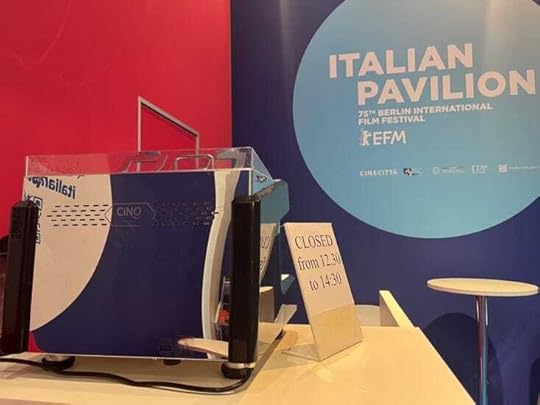
(Not surprisingly, the Italian Pavilion had the best espresso. But even in the midst of a busy trade fair, they kept to their standards and closed for a two-hour lunch break!)
The Europeans have gone all-in on generous tax rebate schemes. (The reimbursement of eligible costs spent in their jurisdictions.) Depending on the country, they range from 30-55% with high (or no) caps on the amount provided.
Culture is a serious driver of GDP in Europe – second only to textile – while costing European governments only .9% of their budgets.
Worldwide, UNESCO estimates that cultural and creative industries generate annual revenues of almost US$ 2.3 trillion globally, contributing 3.1 per cent of the global gross domestic product (GDP) (UNESCO, 2022a, 2023).
Film/TV is big business, and Europe not only offers excellent funding schemes but also highly trained crew, production hubs with top-end equipment and studio space, and film commissioners who offer in-depth assistance including location scouting and assistance with permitting.
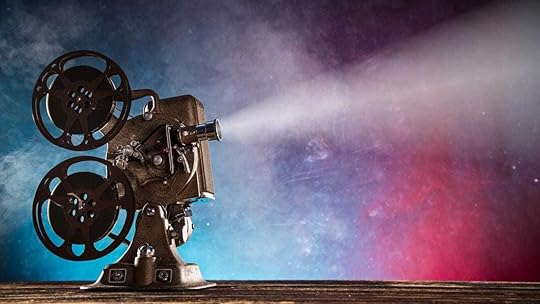
In Europe (and the UK), film and high-end TV production has regained and/or surpassed pre-pandemic levels, with some exceptions including France and Ireland. The UK saw a 31% increase in 2023 alone. This is not true in the US and Canada, which is still feeling the impact of the WGA, DGA and SAG-AFTRA strikes.
(Larger budget films and series have seen a better bump than small budget.)
The quality of the tax incentive matters. For example, the UK offers a 25-40% refundable tax credit with no cap on above-the-line expenses (writers, directors, producers, actors) or annual funding. A much better incentive than Canada or most US states, hence the huge amount of production that has shifted there.
While the US Film and TV industry is still a powerhouse, employing more than three million people, the global production landscape is shifting fast. Initiatives such as Stay in LA, which aims to increase production in LA after sharp decreases, face a steep uphill battle.
Crime Pays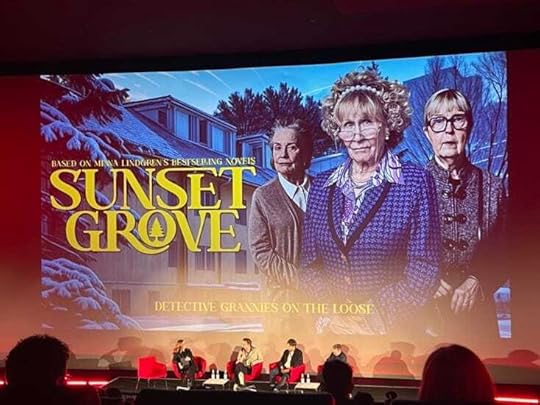
It is, in fact, true that the only thing you can find on the streaming services are crime thrillers. Last year, they accounted for 44% of all film and series commissioned in Europe.
The current desire is to produce very localized content that can travel to other jurisdictions (as opposed to a few years ago when shows were sanitized of local details in an attempt to make them more globally appealing). Thrillers are thought to travel the easiest, while humor and drama can be very regionally dependent.
The recent trend to focus on underlying IP (a book, video game, magazine article, etc) remains strong because broadcasters/streamers assume that brings a pre-existing audience to the show. In a very crowded content market where series need to find their groove in the first season in order to get renewed, every potential eyeball is counted.
Production companies are adapting IP (or a piece of an IP) is innovative ways. For example, Maxton Hall is a six-part German language series for the young-adult market, set in Britain and adapted from a British novel. It was the largest ever Prime Video international launch (dubbed into 20 languages and subtitled for 40 territories).
All fuelled by social media – and of course, now renewed for a second season.
AFM and TIFFThe American film market, a much smaller event founded in 1981, has struggled in recent years. Traditionally held in LA, it moved to Los Vegas in the fall of 2024 and produced a complete flop. It’s scheduled to move back to LA for 2025, but the Toronto International Festival of Authors is making a play for that space, backed up by $23million dollar investment from the federal government.
Roeg Sutherland, head of finance for Creative Artists Agency (CAA), is on the advisory council for the initiative. Sutherland’s the son of Donald, brother of Kiefer. In his EFM talk, he was bullish on TIFF’s chances to become the pre-eminent market in North America. He also believed that the worst of the market ‘contractions’ for film/tv was over.
The Europeans are very keen on co-productions and in particular with Canadian producers, given the existing treaties and the US political situation. My meetings continue post festival with some very large French-based TV production companies. I’ll keep you posted!
Thank you very much for joining me for this thirty-fourth edition of Letterbox. Until next time, friends, when hopefully spring will have descended.
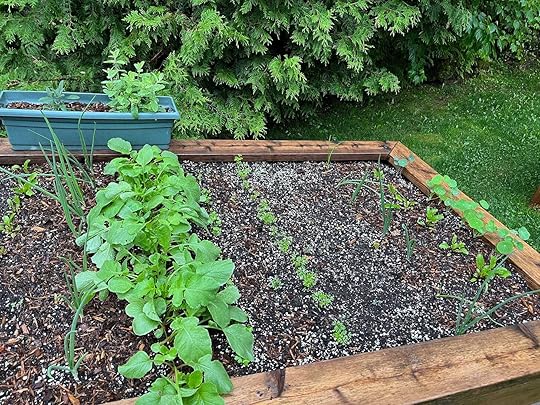
Letterbox: Bookish & Filmish is a reader-supported publication. To receive new posts and support my work, consider becoming a free or paid subscriber.
February 1, 2025
Welcome Home to East Africa, Part 2
I’ve been happily ensconced at home the past three months, although as piles of new travel magazines and guides build on the coffee table, it’s clear I’m dreaming about the open road again.
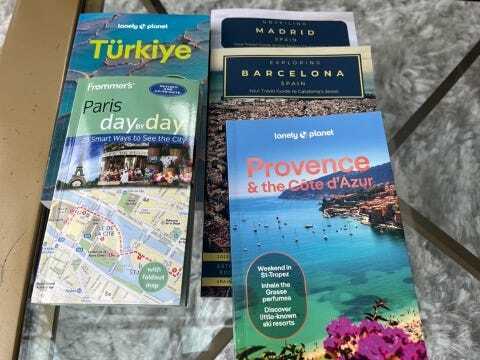
In ten days, I’ll head to Berlin for the European Film Market and Berlin Film Festival, taking meetings on my TV projects. Work, not vacation, but still, my first time back in many years, and Berlin is such a creative, vibrant city that I’m excited. Late March will see me warming up in Exuma for a few days. And April brings a holiday in Paris and Provence to celebrate my birthday. 🥳🎁🇫🇷
But first, travel back with me in time to last October when I visited East Africa – a trip I still think about frequently. Today our stops are the Maasai Mara National Reserve and Nairobi.

Leaving Tanzania and arriving in Kenya was not straightforward. Large storms in mid-2024 sidelined the main road between the Northern Serengeti and Kenya and the alternative route was clogged with transport truck and long border delays.
Instead, we boarded three smallish planes to stamp our passports out of Tanzania, then into Kenya, then finally on to the Maasi Mara National Reserve. (In the language Maa, Mara means spotted, so the spotted land of the Maasai.)
I’m a claustrophobe so small is never better for me. But it was a glorious clear day, and we flew along Lake Victoria, the world’s largest tropical lake. Bordered by Tanzania, Kenya and Uganda, Lake Victoria is home to fish, mammals and reptiles found nowhere else in the world.

The lake is a critical part of the East African economy, providing transportation routes, hydropower, more than 3 million jobs and food for 40 million people. Yet, it has experienced deterioration due to unregulated exploitation, invasive species, habitat degradation and pollution. Inconsistent rainfall pattens in recent years – too little rain then too heavy causing floods – is disrupting ecosystems and forcing community relocations.
A pattern felt the world over as the climate changes, including of course Los Angeles with its cycle of drought and mud slides brought on by sudden heavy rain. Such a relief to see the fires are finally fully contained.)
Maasai Mara National ReserveLocated in Kenya’s southwest, this amazing nature reserve covers 583 square miles and is abundantly rich in wildlife and birds. We stayed with @beyond, an ecotourism travel company with 29 lodges, camps and yurts in Africa, Asia and South America.
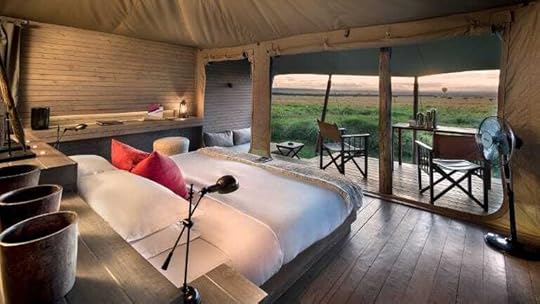
Kichwa Tembo Tented Camp, their permanent tented camp, sits on a private concession on the western border of the reserve. Access to the concession allowed for bush walks, night drives and bush dining, although our long game drives (10-12 hours a day) took us both across the concession and across the whole reserve.
The concentration of animals in the Maasi Mara is stunning. The elephants made me cry every time I saw them. Their eyes are so knowing, and aware, and kind. They are an extraordinary species; long-living (into their 80s), intensely loyal, and with a remarkable memory.
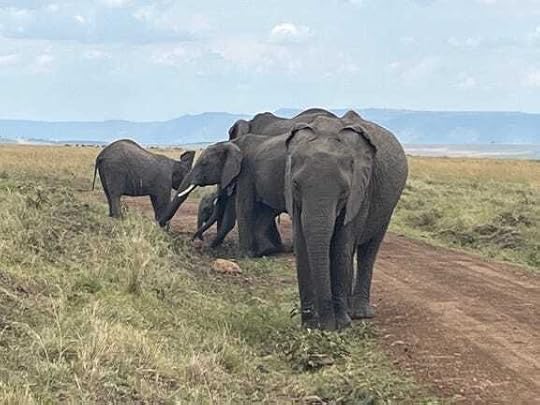
The Sheldrick Wildlife Trust who runs the first and most successful elephant orphan rescue and rehabilitation program in the world, spends up to 10 years re-integrating elephants and rhinos back into the wilderness after saving them and nursing them back to health.
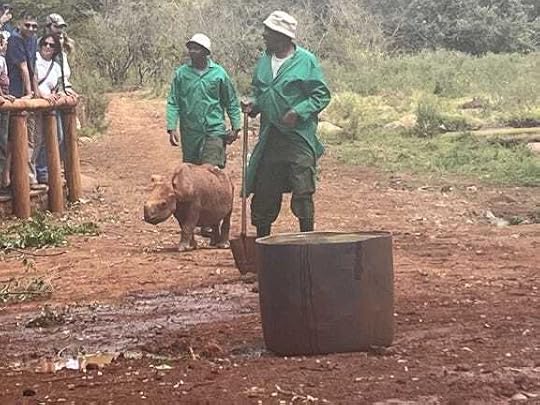
Gamekeepers say a re-integrated elephant will travel hundreds of miles back to the centre to introduce their babies to the gamekeepers who once saved their life, or to give birth there. They do this every single time they have a calf, bringing the entire herd of female relatives and any young male offspring.
(Around age 12-15, male elephants undergo ‘musth’ which results in high testosterone levels and aggressive behaviour. They’re kicked out of the herd to make their own way and ensure continuation of the specials. It’s sad to see a young male following in an attempt to get re-admitted only to be rejected by the matriarch.) Single male elephants can form a ‘coalition’– sometimes called a bachelor herd – and travel together until one of them meets a female to mate with.
This pattern happens with many of the animal species, including lions who are eventually challenged by another male and kicked out of the pride. Because they have no hunting skills – hunting is done by the females – they grow weaker and weaker and eventually become prey themselves.)
Although we’d already seen so many animals in Tanzania, including the Big Five, Kenya brought some special treats. This included large rafts of hippos who manage to maintain their 3,000lb figures eating vegetation.
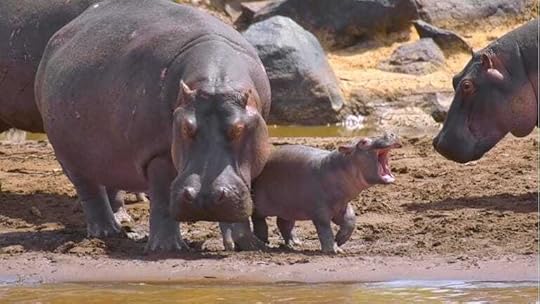
Adorable, yes? Except they kill more Africans than any other animal. More than lions. More than hyenas (who rip their prey apart without having the courtesy to kill them first, then eat until they gorge, vomiting if they need to create space to finish the smorgasbord). And more than cape buffalo who are the only animal who kills without reason or provocation.
Hippos go grazing in early morning, they’re aggressive (no gentle giants there) and they run at a fair clip (30km/h over short distances) rampaging through villages and trampling people to death.
They resemble pigs or warthogs, but in fact their closest living relative are cetaceans (whales, dolphins, porpoises) from whom they diverged about 55 million years ago. And indeed, while we had a bush lunch on the edge of the river (hoping against hope the cliff face was secure), they spent the sunny mid-day swimming, shitting, fighting and making new babies.)
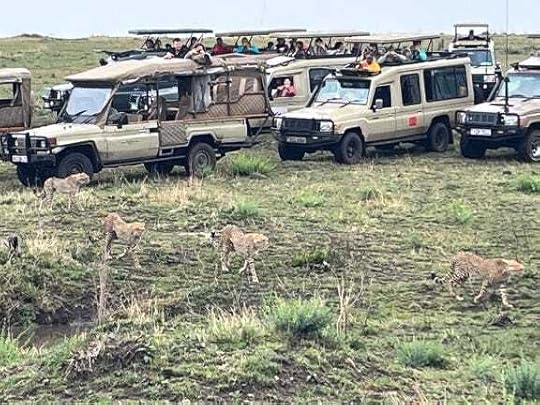
In Kenya, we also saw the endangered cheetah. Unlike other cats, the cheetah cannot climb trees which makes them easy prey, despite being the fastest land animal on earth over short distances (120km/h in 3 seconds). During one game-drive, the call came on the radio that a cheetah mom and her cubs had been spotted. That she had managed to bring all four cubs to the cusp of adulthood is remarkably rare.
We strapped in as our jeep set off in pursuit, cameras at the ready, for the 90-minute drive it would take us to reach the rendezvous point.
The Maasi Mara and the Serengeti share the same ecosystem and the artificial nature of borders is clear when you stand at the intersection point of Kenya and Tanzania. Most of the time you see very few other vehicles. (At least in the Northern Serengeti where we were; our guides said the mid-Serengeti is much more crowded.)
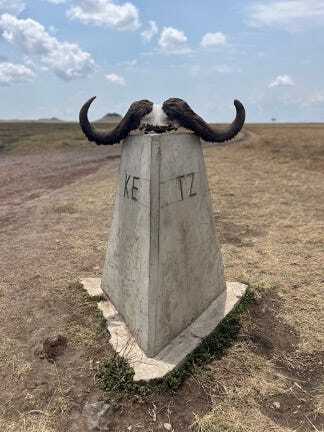
But in a rare spotting like a cheetah or a black rhino, all the guides radio to each other and the jeeps descend.
Suddenly it’s Bread and Circuses time, as the drivers try to outmanoeuvre each other for the best position to watch the cheetah takes its kill. (I became a butt of jokes on the trip as I wouldn’t watch a kill. Yes, of course, it’s cycle of life, but why would I want to be a voyeur of death? I’m a vegetarian for a reason.)
There are strict rules against going off track. Most drivers obey them, but there’s always some cowboy that wants to prove themselves or make their passengers happy. Interestingly, the Sheldrick Trust donates the game warden trucks who intervene to protect the animals.
Unlike the Tanzanian mobile camp I wrote about in my last newsletter which packs up and follows the Great Migration throughout the year, &Beyond is a permanent camp. Fences keep out the biggest of prey. But there are animals that live inside the camp, including warthogs whom I’m telling you, look fierce enough when they’re charging at you to keep you away from their children on the path.
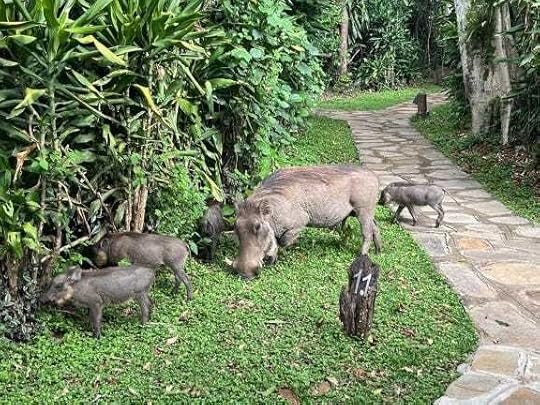
I was SO sad to leave camp on our final day. The Kenyans took such good care of us. Extraordinary food, singing and laughing and talking – whether that was with the head chef as we toured his vegetable gardens. With the guides learning about ecology and conversation. With the Maasai medicine man learning how many ways an acacia tree can heal you.
Reading the suggested books to learn about the history and culture. (Welcome, new subscribers! The book/movie list is in Part 1, Welcome Home to East Africa.)
But there was still one more adventure to look forward to we ran out of trip.
Nairobi.It was such a shock to arrive in a city after twelve days on safari. The animals were still there – herds of cows moving along the side of highways, giant herons and hadada ibis in the tree, the extraordinary Nairobi National Park with its big game in the middle of the city.
But suddenly there were the two-legged variety, as well.
Nairobi’s a modern, global city of approximately 5million. The extremes of poverty and wealth are on full display, from broken down buses being pushed along the streets to the Kibera slum to mansions under armed guard in the suburbs of Karen and Lang’ata where the political and business elites (and many working for international aid agencies) live.
Terrorism continues to be a threat in Nairobi, primarily from communal militias or Al-Shabaab (based in Somalia, which borders Kenya to the north/east).
We stayed at the Fairmont Norfolk; the hotel is behind barbed wire and every vehicle that goes in/out is checked for bombs. (The hotel itself was bombed in 1980, widely assumed by the Popular Front for the Liberation of Palestine, although they denied it.)
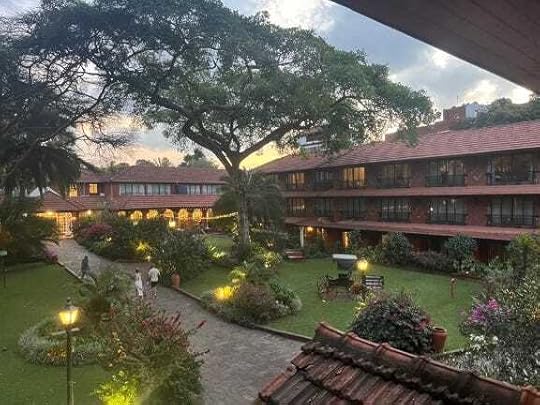
Walking in the city is discouraged for tourists. We went on excursions every day and encountered no problems. We loved the energy of the city and its people, but we were always escorted by a driver who the hotel arranged. This included for meals, to visit the elephant orphanage and the centre, the Karen Blixen house at the foot of the Ngong Hills, arts and cultural tours including museums, etc.
Security is high most places you go, in particular at shopping centres, given the deadly Westgate shopping mall attack in 2013. Although most terrorist attacks the past few years happen closer to the Kenyan-Somali border.
Last year also saw youth-led civil unrest during which several protestors were killed or disappeared. Tensions simmer due to the high cost of living, corruption, and attempts to stifle dissent. Kenya is producing highly educated youth (it has the best system on the continent) yet the job prospects are bleak and often means leaving the country and their families behind.
Kobe Tough.An amazing social initiative we visited was Kobe Tough. Originally, it started as a direct response to the effects of climate change among the Maasai, pastoralists who move with their cattle. Prolonged drought were wiping out entire herds of cattle, and the economic devastation forced early marriage on daughters. (Dowry is paid in cows.)
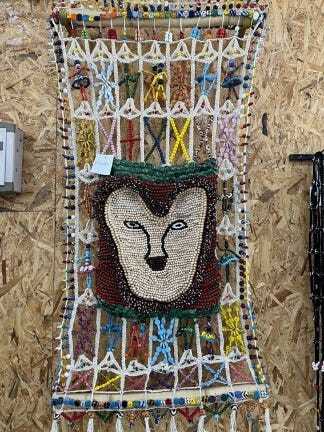
The group has already begun working with Maasai women to upskill their traditional beading into luxury goods to be sold. (Think Apple watch bands and gorgeous belts, along with jewellery). Then Covid hit and tourism plunged, and 300+ women, mostly single mothers, orphans and widows who had been working making ceramic beads in Nairobi, were laid off.
Kobe Tough stepped in, providing not just employment but often housing as well. It’s truly a success story of community. They ship throughout the world, and everything you buy goes to support these women.
A midnight flight of Nairobi connecting though Paris on Air France’s new Airbus 350-900 series planes (burns 25% less fuel than older planes and has a 40% reduced noise footprint) and suddenly we were back in Toronto.
The elephants and zebras and cheetahs replaced by squirrels, chipmunks and raccoons. As much as I like the furry little guys, it just wasn’t the same. (Mind you, I didn’t have to hide my throat from them, unlike Mr Hyena.)
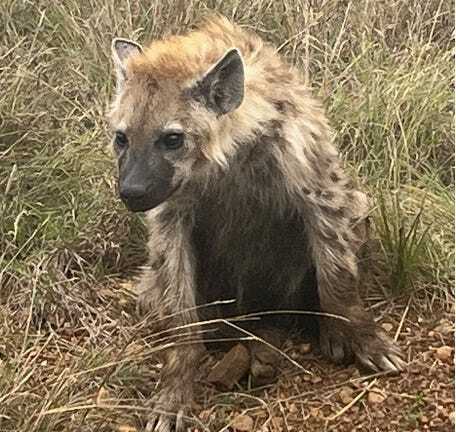
Ashe Naleng Naleng pii – thank you very very much for joining me for this thirty-third edition of Letterbox!
Next Letterbox: the Berlinale, seven-four years old, one of the largest and most important film festivals in the world, and certainly one of the most political. Originally created at the beginning of the cold war, to showcase the free world to the Berlin public and beyond.

An aim as topical as ever, as we watch leaders and others who ought to know better flirt with fascist tendencies. Purges and witch hunts are seemingly the rage again, as if these ‘leaders’ invented them instead of just borrowing the same old, sad copybook of the past.
The European Film Market, held in conjunction, sees 10,000 industry folk come together to do business. It’s the first major film market of the year, and the most important one for global co-productions, which is increasingly important in this age of contraction in the TV and film markets. But I’ll save all that for the next newsletter! See you then.
December 27, 2024
Welcome Home to East Africa, Part 1
It’s a scurrying time of year.
Work that presses to be completed despite the holidays. Writing deadlines. The tantalizing lure of books to read and movies to watch. And of course Christmas.
Underlying it all – a profound gratitude as the house fills with family and friends, dinner parties and holiday celebrations, big and small.
The memory of those who left too soon is much on the mind. I’m conscious, too, of those for whom this time of year brings loneliness or a stark reminder of the struggle for survival. Whether that’s because of wars which rage around the world, or the shameful inequity our own society allows to flourish.
The rumination about connection brings me back to my trip to East Africa.
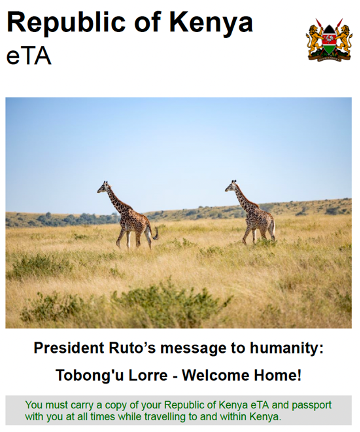
Tobong'u Lorre –- Welcome Home, the border agents say when you stamp into Kenya. It’s how the hotel greets you for the first time, and indeed it’s something you hear over and over again. Such a beautiful sentiment, even for those who have no historic connection to the country.
Because don’t we all spend our lives seeking to (re)create a sense of home, with its illusion of safety and permanence?
This autumn, I fulfilled a lifelong dream to go on safari. The trip with family and friends started with a few days in Kilimanjaro and ended with several days in Nairobi.
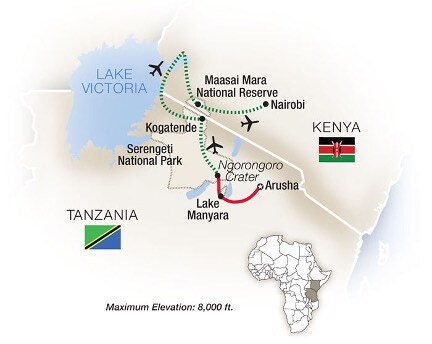
But the bulk of the trip was spent in open-sided jeeps on 10–12-hour game drives, trying to maintain eye contact with a lioness as she saunters within a few feet (breaking gaze = not good). Squatting behind a bush to use the toilet and hoping a buffalo doesn’t come charging. Eating stunningly good food at bush lunches or tented dinners, prepared by first-class local chefs for our group of fourteen.
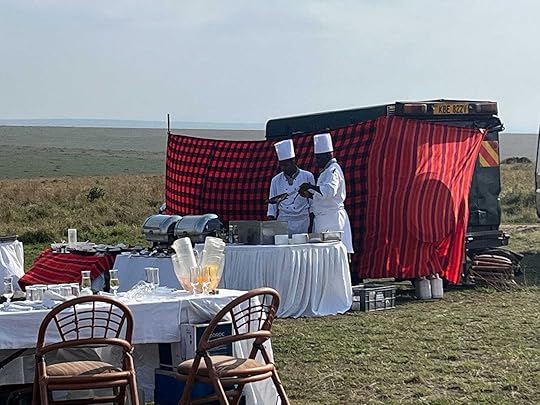
Falling into bed every night, exhausted and hoping not to be attacked by the pack of hyenas who’ve set up shop on the edges of our mobile camp. (Mobile camp = no fences. Guns are banned in almost all of Tanzania so camp staff make do with sticks and animal calls to keep predators away in the dark.)
All in all – heaven. A truly transformational trip to a part of the world I’d never visited before and can’t wait to return to. And while my year of excited planning of the trip focussed mostly on the animals because I’m such a fanatic about the natural world, it’s the generous heart, kindness and joie de vivre of the people that I miss most.
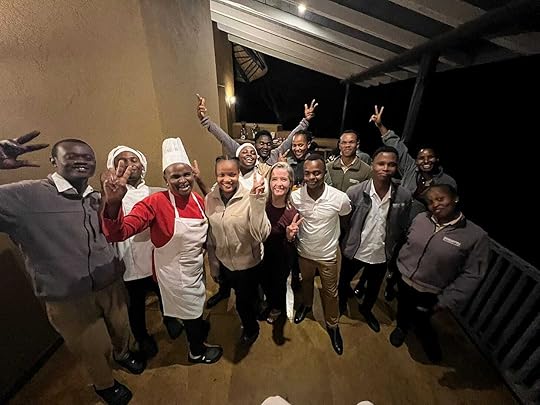 Ngorongoro Crater and the Maasai (Tanzania)
Ngorongoro Crater and the Maasai (Tanzania)Our safari started in the Ngorongoro Crater, the biggest intact volcanic caldera on Earth, and home to 25,000 animals. Due to its enclosed nature – you circle up and up in shroud-covered montane forest until you reach the rim and then drive over and down 2000 feet into it – this world wonder has effectively formed its own ecosystem so complete the animals don’t need to leave.
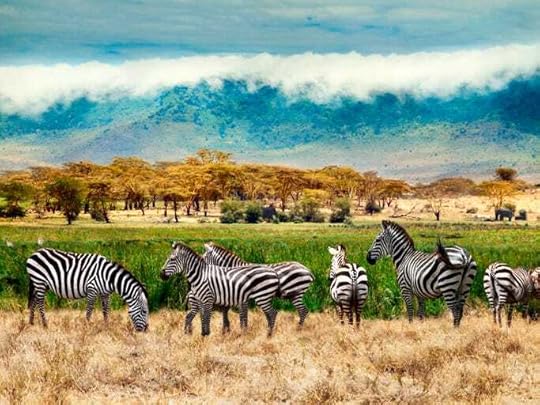
The crater is large (330 km²). You explore grasslands, wetland and woodlands and the vast array of animals for whom they are home: gazelles, wildebeest, zebras, cape buffalo, elephants, hippos, black rhinos, ostriches, and more, and so many birds.
I loved the symbiosis. Zebras and wildebeests roam together because one sees predators in the distance and one hears them. Birds catch rides on the backs of animals and help out by eating the insects and ticks. Female ostriches are bland-coloured so they blend into the grass during the day, guarding the offspring, while males have black feathers so they can take their turn at night.
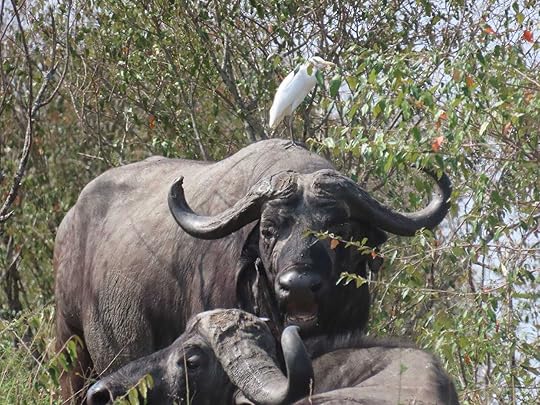
Enroute to the Ngorongoro area, we spent several hours in a Maasai village taking a medicine walk, visiting a local school supported by Tauck (our tour operator), visiting with the women and girls (their culture is polygamous and multi-generational) and buying their beaded jewellery, and having lunch. It was an eye opener.
There are approximately eight million Maasai in the world, with the majority living in Tanzania. Traditionally, they are pastoralists (nomadic, moving with their herds of cows). The Maasai are not one of Tanzania’s largest tribes, but they are important, in large part because they maintain a traditional way of life.
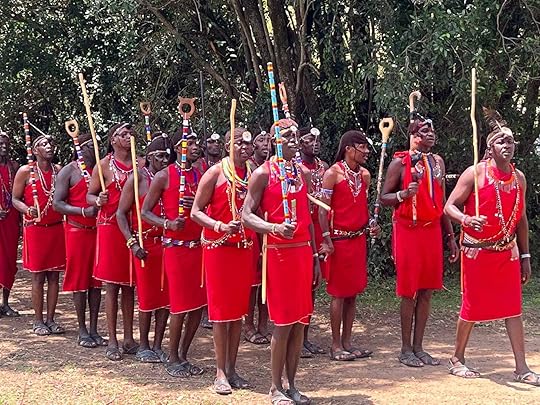
In 1959, the British colonial government established the Ngorongo Conservation Area, to create a permanent homeland for the people who live in and around the crater, the vast majority of who are Maasai herders. (In 1951, when the Serengeti National Park was established all the Maasai locals were relocated to the NCA.)
The Maasai don’t hunt, our guides explained, thus are trusted not to poach the wildlife and to live in harmony with the crater’s ecosystem.
However, In 2021, the Tanzanian government devised a plan to relocate about 82,000 Maasai by 2027. NGOs such as Human Rights Watch decry the decision and the methods used, which they claim include scaling down essential infrastructure like education and health services, as well as access to pasture, water and cultural sites, and restricting movement in/out the crater.
The decision has been very controversial. Criticism of it is met with stiff retaliation, including media censure.
The government argues that the Maasai’s population size makes it difficult to maintain Ngorongoro’s pristine nature and safeguard its UNESCO World Heritage Site designation. Which of course ladders up to to tourism.
The impact of one’s visit to Tanzania is something I thought a lot about while there. There’s been much published in recent years about the environmental and cultural impact of tourism. Yet, tourism dollars is what keeps these national parks going and funds conservation efforts in a country where only 30% of people have full-time employment.
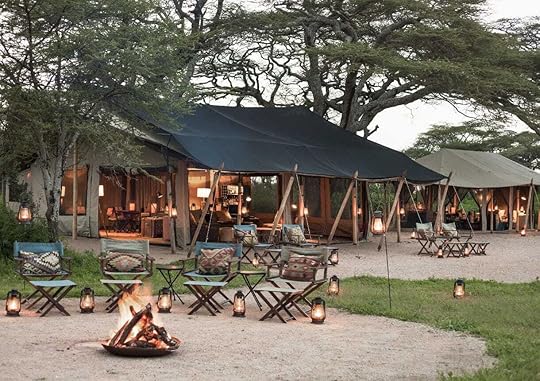
Dan Friedkin, who owns Legendary Expeditions, including Songa Migrational Camp where we stayed in the Serengeti, leases four million acres in different parts of Tanzania. He’s an automotive billionaire from Texas turned film producer, who spends more than $1,000 an hour keeping Tanzania’s only two anti-poaching helicopters in the air.
I was originally drawn to visit the country after watching a documentary about Samia Suluhu Hassan, Tanzania’s first female and first Muslim president. (Tanzania has 60 million people; it’s roughly 63% Christian, 34% Muslim, plus other faiths.)
Suluhu was elected as Vice President in 2015. She became president when her predecessor, John Magufuli, passed away in 2021 (a covid denier, he’s rumoured to have died of the disease). As president, she’s implemented many democratic reforms (although is not above media intimidation), expanded infrastructure, globalized the economy through investment and promoted tourism.
The UN estimates that tourism represents about 17% of the overall Tanzanian economy, and provides the country’s third-largest largest source of employment by directing employing over 850,000 people.
Tauck runs about 100 tours a year in Africa, thus are able to offer full-time employment. The guides we had in both Tanzania and Kenya were extraordinary. Their knowledge of, and commitment to, conservation and the natural world was deeply impressive (they’d all studied it at university and regularly go on refresher courses). I so appreciated the opportunity to learn from them.
You become attached, spending all day in the Jeep and over drinks in the evening, talking about life and family and Africa. Their love of country, in particular in Tanzania, is inspirational. ‘Please come back,’ they said at the goodbye, all of us teary-eyed. ‘Tell all your friends to come, too. The future of the Serengeti depends on it.’
The Serengeti and The Great Migration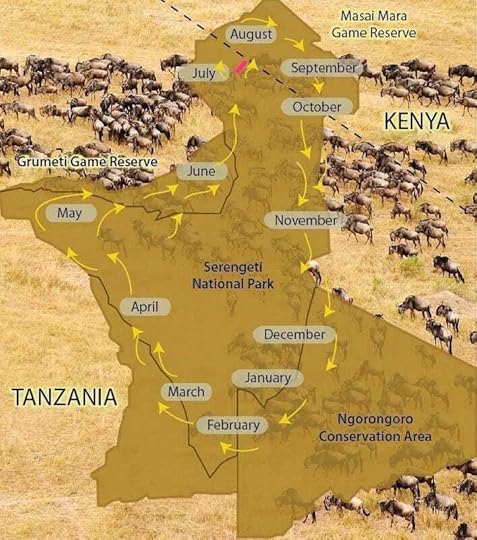
The Serengeti looms large in the imagination even before you visit, because of references in poetry, music and film. The region includes approximately 30,000 km² of land, including the Serengeti National Park and several game reserves.
The Great Migration, an 800km trek of more than 2 million wildebeests (with zebras and gazelles), is the largest mammal migration on earth. Its timing coincides with the greening of the grasses during wet season, a time when animals can easily spot predators, which makes it ideal for giving birth.
However, as the plains dry, the wildebeest are forced to move looking for greener pastures and thus begin a clockwise movement cycle throughout the year, which includes the famous crossing of the Mara River.
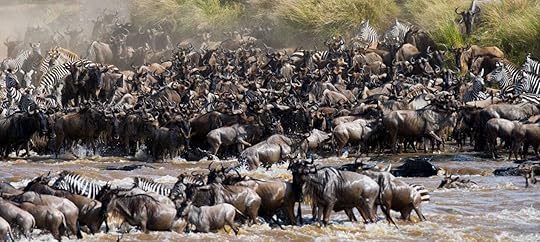
We spent five hours parked in the hot sun waiting for a crossing. This cartoon captures the stop/start nature of the wildebeest as it considers whether to risk the alligator-infested river, often egged on by the zebras who also want to cross, but not to be first.
The days are long in the Serengeti. Breakfast starts at 5:45am, wheels up at 6:30am, and you return to camp in early evening. The roads are very bumpy – all the better to slow down the night poachers – and dusty. The days are hot.
From extraordinary sunsets and sunrises, to honey colored plains, to the genuine warmth and welcome of the people, it humbles you to know you’re one tiny visiting fleck in a world so different from our frenzied, consumeristic one.
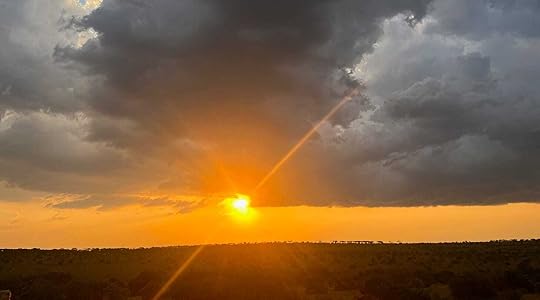
And then of course there’s the animals. The Serengeti is home to the Big Five – lion, elephant, cape buffalo, leopard and rhinoceros. As well as hippos, ostriches, zebras, wildebeests, baboons, impalas, topi, gazelles, hyenas, warthogs, and the endangered cheetah. And so many more.
We saw them all, often right up close as they walked by our open-sided Jeeps. In the Serengeti, the guides drive off path, bringing you as close as it’s safely possible for you and the animals.
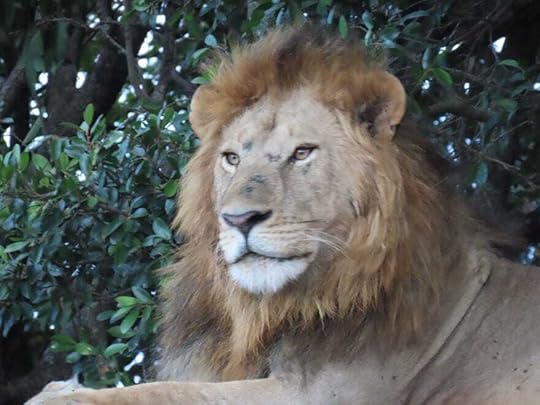
Of all the places we visited, the Serengeti (Africa’s oldest ecology) was my favourite. The vast open expanse means you don’t encounter other vehicles, except in a rare spotting like a family of cheetah, when the guides all radio each other and suddenly it’s bread and circus time as jeeps jockey for position.
During the day you race round gazing at wonder at the stunning acacia trees, the 500 different bird species, the 2 million+ animals doing their thing. You return to camp at sunset, where the staff meet you with hot facecloths to wipe away the deep red dust on your face and hands, and together you sing the Kenya pop song Jamba Bwana.
Tucked up into your bed at night with a hot water bottle, you wonder what animal is rustling those leaves as it passes by your tent, feeling both a little scared and deeply connected to the ecology around you. Then you wake, and go out to meet the day all over again.
Asante sana, Tanzania 🇹🇿. I hope to return one day soon.
Ashe Naleng Naleng pii – thank you very very much for joining me for this thirty-second edition of Letterbox!
Until next time, my friends, when I’ll write about the Maasai Mara Nature Reserve in Kenya, as well as our time in Nairobi.
But first, some African book recommendations from our guide Leah:
A Grain of Wheat by Ngugi wa Thiong'o (novel set on the threshold of independence).
The White Maasai by Corinne Hofmann – both a book and a movie (non-fiction about a European woman who meets and marries a Maasai man).
The Worlds of a Maasai Warrior: An Autobiography by Tepilit Ole Saitoti.
White Mischief by James Fox (non-fiction about a murder scandal from the 1940s British colonial times in Kenya).
Green City in the Sun by Barbara Wood (Historical fiction about two families over three generations in Kenya related to colonialism and interactions with local tribes).
Unbowed: A Memoir by Wangari Maathai
Whatever You Do, Don’t Run by Peter Allison (true stories from a safari guide).
I Dreamed of Africa by Kuki Gallman (also a movie).
West with the Night by Beryl Markem.
Barefoot over the Serengeti by David Read.
Here are hosts at &Beyond camp in the Masaai Mara singing Hakuna Matata (no trouble) to say goodbye. See you next time!
November 25, 2024
Drinking from a Firehose – Texan Style
I’ve had several adventures since the last newsletter including Tanzania and Kenya, Edinburgh and New York. Lots to write as we count down to the end of the year.
But first at bat: Los Angeles and Austin, and an explanation of why I’ve been an inconsistent correspondent the past few months.
I spent the last week of October in Texas attending the Austin Film Festival and their annual writers conference, the most influential screenwriting conference and competition in the US. It’s a THING.
The conference is as Texan-sized as their hospitality (and their food portions). Sessions start at nine in the morning and run until late night, a mix of workshops, panel convos, competitive pitch sessions, small industry roundtables that provide one-on-one access to studio heads, BBQs and parties. Lots of parties.
An average day has 45 sessions to choose from, and mostly you want to attend them all, they’re that good.
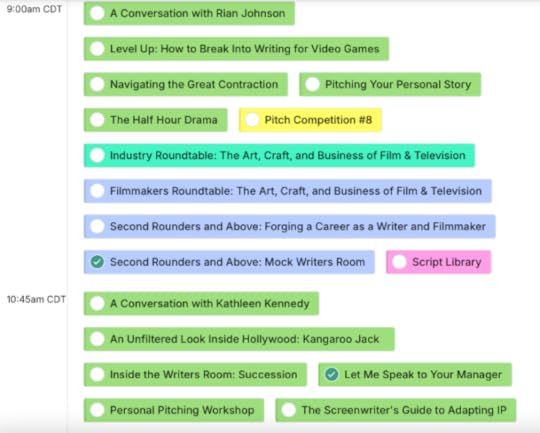
Some of you will know I’ve spent the last year diving into the world of screenwriting, creating new TV series and loving every minute of it.
In January, I started taking screenwriting classes intensively through Gotham Writers in New York. For the first three months I learned how to write teleplays by writing a spec script – i.e., one for an existing show.
It’s a labor intensive process, which includes closely dissecting the structure and timing of all previous episodes, as well as the characters and world. I chose ONLY MURDERS IN THE BUILDING. (I’ve learned that I like to kill people and make audiences laugh, not always at the same time.)
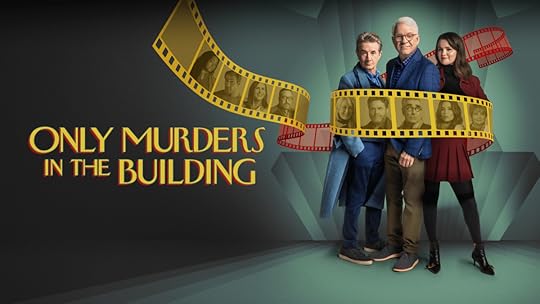
The following three months of classes focussed on how to write original TV pilots and the pitch decks I’d need to sell them. And, at the end of all that, I began working with NYC-based screenwriter Jim Mendrinos whom I meet with over Zoom once or twice a week and who reads everything I write. To date, that includes three pilots, two pitch decks and another series in the works.
Jim’s been an invaluable resource and support to me. (For the writers on the list, he also offers an emailed daily writing prompt via subscription that’s very good.)
It’s been a wild ride, and I love it. It does, however, take up a huge number of hours. Thus, my irregularity here.
There are two main ways new screenwriters get into the US industry: a) script competitions or fellowships, and b) showing up at industry events such as AFF and making contacts. “Being present” as the head of creative writer development at Disney told me, after a pitch.
Austin’s deadline for submissions was in May, and if you’re doing the math, that was very early in my screenwriting process. Regardless, I entered two early-draft scripts – a darkly funny thriller titled DEATH AND THE GLITTERATI and the comedy spec for ONLY MURDERS IN THE BUILDING.
And friends, to my surprise and delight, both were chosen by the jury as Second Rounders (quarter finalists) from more than 14,000 entries.
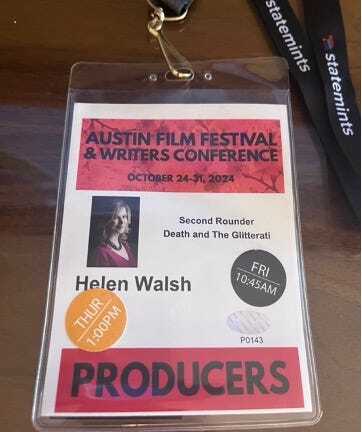
Known as the “Writers Festival,” AFF recognizes the writer as the core of the creative process in filmmaking. The conference speakers – senior execs from network, cable and streamers; studios and production companies, plus agents and managers, showrunners and screenwriters – came primarily from LA, some from NYC and a few scattered elsewhere. All were knowledgeable, blunt, accessible and friendly.
(Except the one Canadian speaker on the program, who had the arrogant, gatekeeping attitude sadly so prevalent in our country.)
AFF felt like a masters’ degree in both screenwriting and the US industry. I came out of it with a raft of new contacts to meet with, and a determination to have fun writing, work hard and see where it all goes. I’ve set up a production company and will keep you in the loop as the journey continues!
 Austin, Texas
Austin, TexasI had only one day post conference to see something of the city itself, which I’d never visited. Their motto, “Keep Austin Weird,” is easier said than done these days. The city is experiencing exponential growth as people and companies flock from California to Texas chasing lower tax rates and more affordable housing.
An island of progressiveness in the Republican stronghold of Texas, Austin is the main foci of the state’s arts scene. I wouldn’t call it the most attractive of cities, with its kind of low sprawl and hodge podge buildings. But it’s fun and quirky and I’d like to spend more time there. The live music scene is buzzy and there is plethora of restaurants (though, sadly, not many vegetarian as I found out).
There are many outdoor options, including a bike/pedestrian trail that runs along Lady Bird Lake. At the end of October, the weather was still in the ‘90s so it was well used. There is also kayaking and canoeing on the lake.
I’ll leave you with a few images of the city, and of the conference bag goodies. (Edible cannabis, a memorial candle for immigrants, Chick-fil-a discount coupons and some thoughts writing/work balance.) And of course, bats! Since Austin has North America's largest urban bat population. They may not have seasons those of us on the East Coast would recognize, but they do have Bat Season!
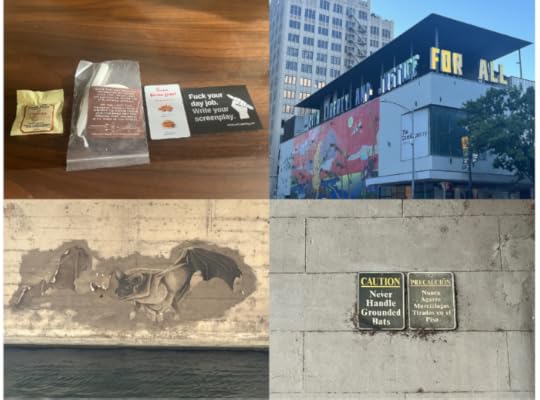
See you next year, Austin!
Westwood.In September, as I began to think about marketing (aka pitching) my TV concepts, I attended Content Canada, one of a series of TV focused conferences produced by C21 Media that took place during the Toronto International Film Festival.
Happily, I made contacts there with production companies and so went to LA for three days before Austin. As readers of this newsletter will know, I always like to stay in a different part of the city when I’m in Los Angeles. On this trip it was Westwood.
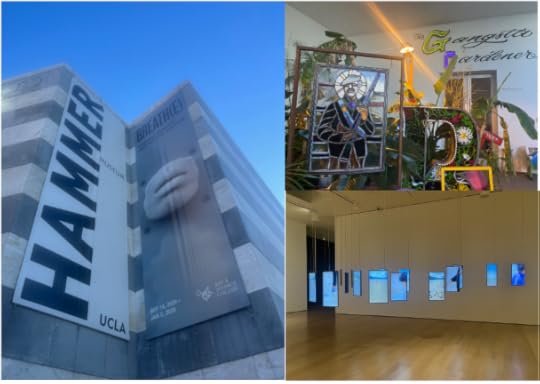
Located west of Beverley Hills, east of Santa Monica, Westwood is home to UCLA, the Geffen Playhouse, the Westwood Village (shops and restaurants) and a lot of residential.
It’s also home to the Hammer Museum, an amazing free museum and cultural centre originally funded and opened by Armand Hammer.
It was built to feature his collections (including old master and nineteenth-century European paintings and drawings) as well as provide galleries for traveling exhibitions. Dr. Hammer passed away in December 1990, three weeks after the opening of the Museum. Its management was eventually assumed by UCLA, who relocated their collections and staff from two other galleries to the Hammer.
They take an eclectic curatorial approach which I really enjoyed, particularly their currently running Breath(e): Toward Climate and Social Justice installation. And the space Gangster Gardener (aka Ron Finley) occupies upstairs. It was Ron’s Masterclass that got me hooked on gardening during the pandemic. And how my garden continues to grow! 👩🌾

But my favorite part of Westwood was Pierce Brothers Memorial Park and Mortuary. The Who’s Who of Hollywood is buried/interned there: Marilyn Munroe, Truman Capote, Natalie Wood, Dean Martin, Ray Bradbury, Ryan O'Neal and Farrah Fawcett, George C. Scott, Don Knotts, Jack Lemmon, Tim Conway, Walter Matthau, Billy Wilder, Kirk Douglas, Gena Rowlands, among many others.
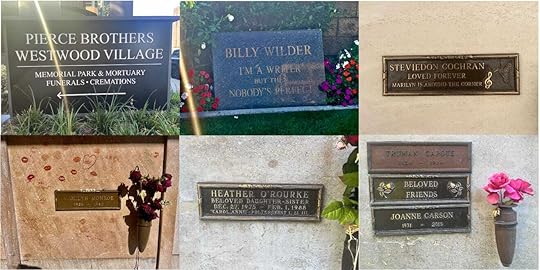
Many of the grave markers displayed the same humor the actors or writers showed in life. And in a strange twist, some list their most famous roles on the gravestone. I guess even in death you’re only as good as your last gig.
If you watched the docudrama Feud: Capote vs The Swans and were surprised by that final twist thirty-two years after Capote’s death when his long-time friend Joanne Carson auctions off his remains to the highest bidder, you’ll notice that part of each of them is buried together at Pierce Brothers. If you care to go down the rabbit hole of reading why in Esquire. . .
TV Recommendations (in the dark yet funny category): The Diplomat. If you haven’t seen the show, go binge both seasons on Netflix. Some of the best writing on television. So rare that an ending shocks me but this one did. Second fav: Slow Horses on Apple+. What We Do in the Shadows, a vampire comedy, is hilarious although sadly the current season is the last one. Season 4 of Only Murders in the Building is uneven – the doppelganger cameo structure doesn’t quite work – although time spent with Oliver, Charles and Mabel is always so much fun.
Thank you for joining me for this thirtieth-first edition of Letterbox. See you next time! I’ll be writing about East Africa, and since who doesn’t love a baby elephant photo, here’s one to hold you over until then. (An orphan in the Nairobi sanctuary drinking his morning milk.)
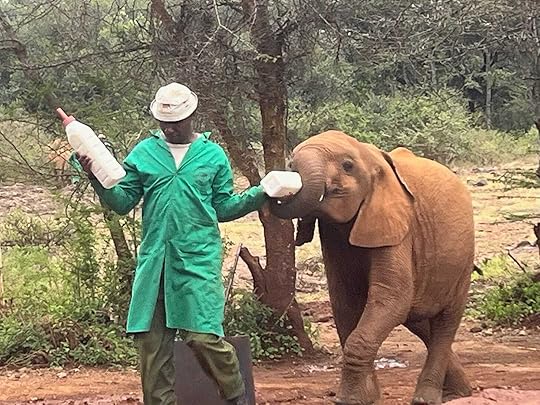
August 5, 2024
Walking The Eternal City
I love organized tours when I travel, particularly of art galleries, museums, and historical sites. Not all tours are created equal, but if you research you can find tour guides with advanced degrees in history or art history, who truly deepen the experience of a place.
In June, I took two outstanding walking tours in Rome. The first of the Jewish Ghetto including the Great Synagogue and Museum, and the second of The Colosseum, The Forum and Palatine Hill.
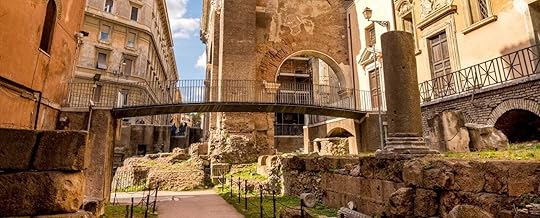
The history of the two intertwine, of course.
The Jewish community in Rome is the oldest in the world with a continuous existence outside of the Middle East. Roman Jews first came from the Holy Land in second century BC, and lived in relative peace at first as both Julius Caesar and Augustus supported laws that allowed them to worship as they chose.
In 1st AD, the Romans sacked the Second Temple in Jerusalem, stealing the gold to build the Colosseum.
A cheery place, the Colosseum back in the day. People bought tickets to watch animals from Asia and Africa tear each other to shreds in the morning, plus some early Christians they threw into the mix. Then it was time for public executions over lunch, followed by the gladiators fighting each other to the death in the afternoon.
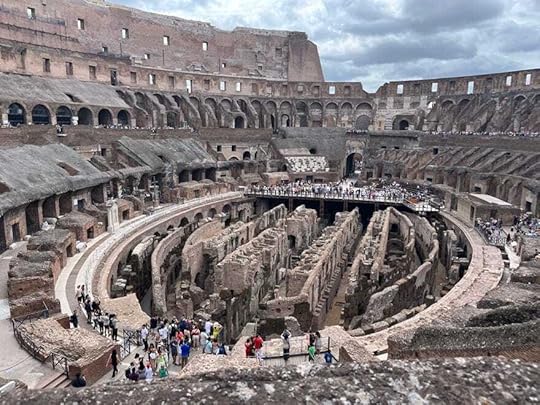
The Coliseum was a private business, with food concessions for spectators to enjoy and branded goods to be bought while animals and the poor fought for their lives.
The gladiators were slaves owned by the wealthy including the political elite, who paid for their training and lodging. More than 1000 gladiators were killed each year, for more than 500 years, meaning more than a half million men were sacrificed for the entertainment of others.
We’re a blood-soaked lot, humankind. It’s nothing new.
Micaela Pavoncello was my Jewish Ghetto tour leader. Her father’s family came to Rome in Caesar’s time, and her mother is Libyan Jewish. The Roman Jewish are historically neither Ashkenazi or Sephardic (distinctions that came after the establishment of their community) but of course they expanded as forced expulsions drove Jews of different backgrounds to Rome.
(From Spain and Portugal in the 1490s, from the nation states of what is now Southern Italy in the 17th Century, from Arab lands after the UN establishment of Israel in 1948 and especially after the 1967 Six-Day War.)
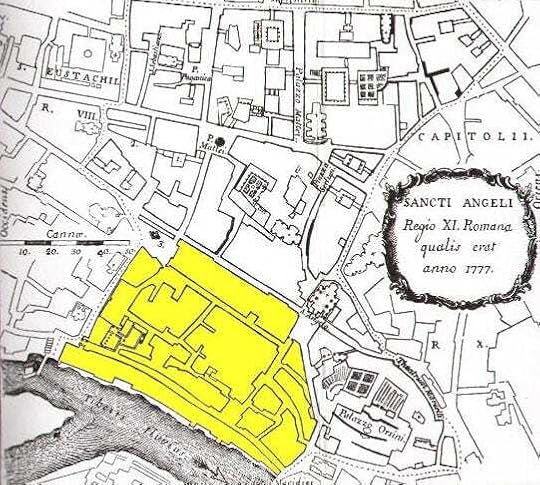
The Jewish Ghetto was established by papal decree in 1555. It required the 2,000 Jews who had called the city home since before Christian times to live in a walled quarter next to a river which constantly flooded and close to the fish markets that stank.
Jews were restricted from owning property, practicing medicine on Christians or having jobs other than money lending or selling clothing. They were forced to wear a yellow cloth on their clothes (Hitler wasn’t an original thinker) and taxed yearly for the pleasure.
The Catholic Church tried both a carrot and stick approach to convert Jews to Christianity. The perimeter of the ghetto is lined with churches (some with Hebrew on the outside) and attendance at Mass was compulsory. Jews would wear wax in their ears to drown out the sermons, sometimes falling asleep and getting whacked by the priest to wake them up.
(Roman mothers, both Jewish and Catholic, have a habit of raising their hands and saying, I’ll wake you up, in a modern-day reference to the slap.)
The Catholic Church lost control of Rome in the the 1870 unification of Italy. With this dramatic change in governments, the requirement that Jews live in the ghetto came to an end. But the centuries of crowds, restrictions, and disease had taken their toll and the population had shrunk in half. In 1888, the ghetto walls were taken down, and much of the area was demolished.
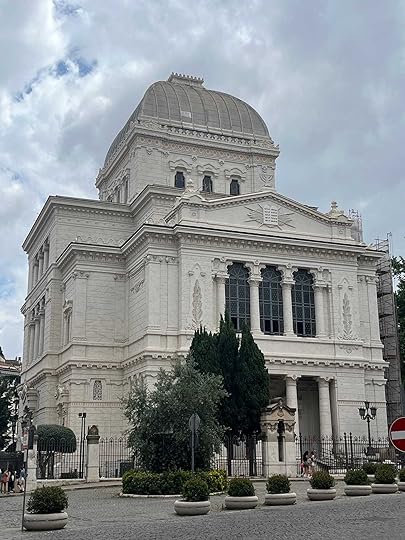
In 1904, the Great Synagogue of Rome was built (replacing five small synagogues erected to house different Jewish faith groups as they assimilated into the ghetto over the centuries), and a number of apartment buildings erected. Streets were widened and river embankments created to prevent flooding and reduce the spread of disease.
The ghetto is now one of the most desirable – and expensive – neighbourhoods in Rome. It’s a mix of Jews wealthy enough to buy their way back in, those too poor to have left, and the culturati and intelligentsia of all backgrounds and faiths who have found a dynamic community there.

Of course, Roman Jews did not fare well during WW2. They were told by the Germans they could buy escape deportation for an outrageous amount of gold. The Roman Jewish community was never rich, but they gave up their wedding rings and personal effects to be melted down and handed over.
The Vatican’s only contribution? A vague offer to lend them gold (with interest) if they could not come up with the needed tithe to save the women and children. Of course, the Nazis reneged on their promise. Twenty days before the end of the occupation, 25% of the Jewish population (more than 2,000 people) were deported to the camps. Only 102 survived.
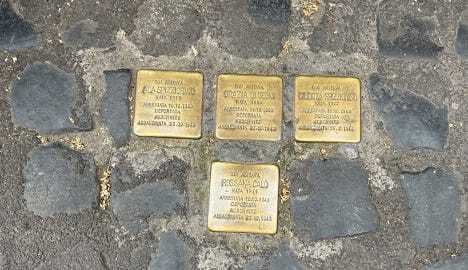
Now numbering 35,000, the Rome Jewish community has 18 synagogues, their own Jewish-Roman dialect, musical and culinary traditions. As Michaela says, they’ve witnessed the grandeur of the Roman Empire, and its fall, the beginning of Christianity, the Barbarians, the Inquisition, The Popes, the ghettos, and the finally emancipation, before World War Two and the Shoah (Holocaust).
I originally became interested in the Jewish history of Rome after subscribing to a fellow Substack author, The Jewish Table by Leah Koenig then getting her cookbook: Portico: Cooking and Feasting in Rome's Jewish Kitchen. It’s a fascinating part of Rome’s history that I’m glad to finally know.
(BTW, friends, I follow several great Italian Substacks including Italicus: a writer’s life in Italy, Letters from Tuscany, and Piccolo Centro.)
After the fall of the Roman Empire, the Colosseum began to deteriorate. Earthquakes damaged the structure and it was abandoned as a venue, looted for its building bits, squatted in by the poor and essentially left to rot.
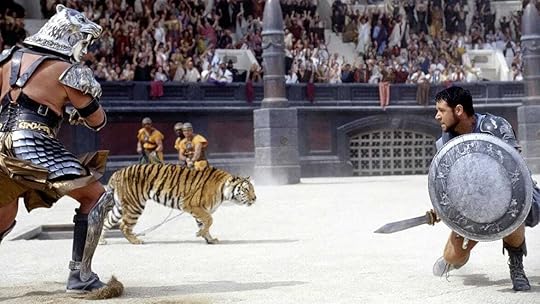
A restoration project began in the 1990s, but it wasn’t until Ridley Scott’s 2000 film Gladiator that tourist interest in the Colosseum spiked and with it, further changes to accommodate the hordes. The site is now one of Rome’s most popular tourist attractions, hosting millions of visitors a year and generating needed money for city coffers. Another example of the power of cultural tourism.
Kenya.I’m off to Tanzania and Kenya next month, to fulfill a lifelong dream on going on safari, followed by some extra days in Nairobi. Among the many things I’ll visit there is Karen Blixen’s farm, located 10km from the city centre.
I had a farm in Africa at the foot of the Ngong Hills.
Better known by her pen name, Isak Dinesen, the Out of Africa author settled into a 6,000-acre farm in 1917 (which had been financed by her family) with her new husband.
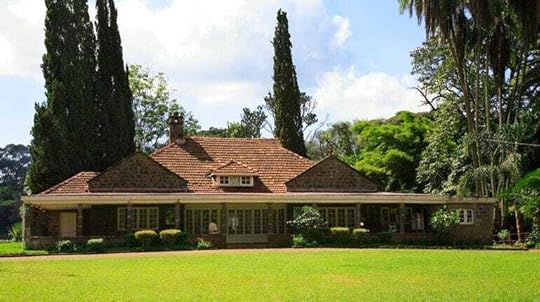
First, the coffee farm failed then the marriage did (Bror von Blixen-Finecke was a relentless womanizer with no business acumen). He left, but she remained running it on her own, finding great freedom in escaping the conventions women were subjected to at the time.
But financial difficulties continued and then her lover died. Blixen eventually returned home to live with her mother. During World War II she was active helping Jews escape out of German-occupied Denmark and writing.
Blixen’s Kenyan farm was eventually broken up into 20-acre lots and sold. The actual farm house passed through several hands and was sporadically occupied until purchased in 1964 by the Danish government and given to the Kenyan government as an independence gift.
They turned it into a college of nutrition – that it is, until the 1985 movie based on Karen’s autobiography became a smash Oscar-winning international hit starring Robert Redford and Meryl Streep.
The National Museums of Kenya then decided to acquire the house and open a ‘significant cultural landmark’ museum. The suburb where it’s located is called Karen.
Out of Africa was published in 1937 and became a huge hit. Post-colonial treatment of Blixen and her work has varied. Some dismiss her as a white European aristocrat who romanticized Africa. While still others view her work in the context of the era, also considering her position as an outsider, a Dane and a woman, and her concern and respect for African nationalists.
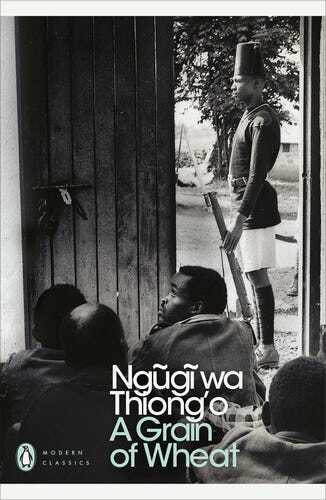
Blixen is rumored to have been frequently considered for a Nobel Prize but never awarded it because the Nobel jury worried about favoring Scandinavian writers.
One writer who did win the Nobel Prize for Literature is Kenyan Ngũgĩ wa Thiong'o whose novel about the fight for Kenyan independence, A Grain of Wheat, I’m currently reading. It’s excellent.
Thank you for joining me for this thirtieth edition of Letterbox . See you next time!
June 14, 2024
Bread and Circuses, Part 2 – Italian Style
Ciao, amici miei.
I’m in Bari, Italy, part of the media delegation for the G7 Apulia Summit. What that really means, is that I’ve joined the G7 Research Group, headed by the indefatigable Professor John Kirton and Madeline Koch, for my first summit since the 2005 summit in Gleneagles, Scotland.

Founded in 1987, by Kirton and the late Bill Graham at Trinity College (University of Toronto), the research group is comprised of students, academics, and alumni, who live around the world.
The group tracks commitments made during the summit and compliance against them, across all policy areas. It also acts as a key resource for media, providing interviews, backgrounders and expert insight.
Tutto il mondo were invited to the G7 Summit this year by Italy’s prime minister Giorgio Meloni. In addition to the heads of the G7 countries (Canada, US, Germany, France, Italy, UK and Japan), Meloni included leaders from Africa, Indo-Pacific, the Middle East, the Global South, as well as Zelensky from Ukraine, and Pope Francis.

My area of research for the group is migration. It’s of great personal interest to me as the daughter of two immigrants and as someone who runs a literary mentoring organization that has supported more than 700 writers across Canada’s diasporic communities over the past two decades.
But I’m also here doing research for my next novel. It explores the dramatic aftermath of a migrant boat from Tunisia which sinks off the coast of Italy. Early chapters are set at this G7 Summit.
Years ago it was assumed that the G20 would eventually surpass the G7 as the leading global governance forum given its membership represents the world’s most populous countries. That didn’t happen.
The G7 has its swagger back, throwing open its doors - according to Meloni - to work collectively with other countries in the pursuit of shared prosperity.
Last Sunday’s European Parliament elections created seismic shifts, particularly in France and Germany. While the pro-European centre held, the shift to centre-right and far-right parties is pronounced, with migration being a top issue for voters.
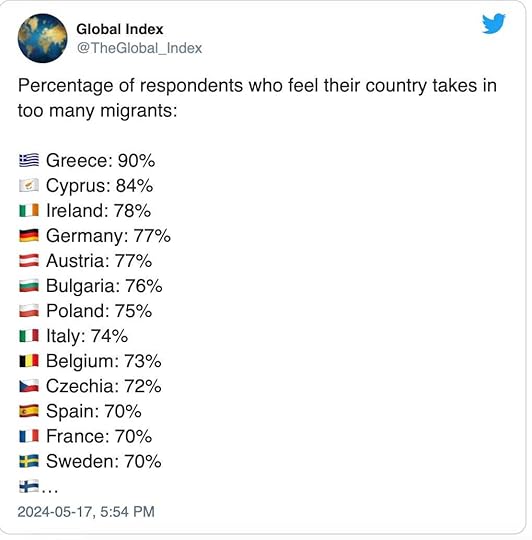
Many on the populist right and left spout anti-immigration rhetoric, including the blunt instrument that is France’s Marine Le Pen, with her recent threats to deport any immigrants who threaten France.
Italy’s Meloni uses more nuanced language as she shifts closer to the centre while still appealing to the base who elected her. She is by far the most popular G7 leader, and increasingly the most powerful in EU politics.

Meloni frames migration as an issue of human rights – people should have the right to stay in their own country and receive education and employment opportunities. Thus the G7 articulated a strong focus here on root causes of ‘irregular migration’ aka improving conditions so people don’t need to flee their homes.
Through their Mettei Plan for Africa, Italy is investing billions in infrastructure projects, often green energy, and often in partnership with powerful orgs like the African Union.
At the same time, Meloni – like most other leaders including the traditionally xenophobic Japan – recognizes that immigrants are necessary to offset declining populations and to fill jobs that Italian-born citizens don’t want to do.
They’ve recently signed a multi-year deal with Tunisia to simplify visa and residence procedures for Tunisians who want to come here. Italy has also taken in hundreds of thousands more people than expected given Meloni’s campaign rhetoric of 2022.
At this summit, the G7 launched a new initiative to prevent transnational organized crime – aka people smugglers – and enhance border security, while committing to the creation of safe and regular pathways for migration.
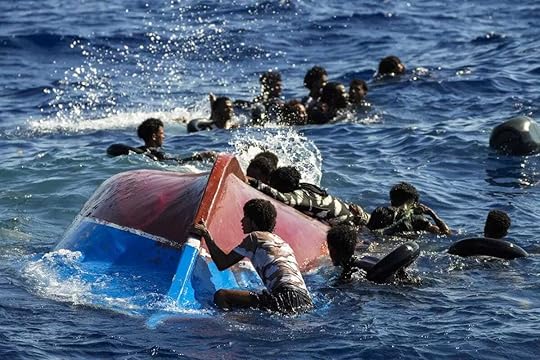
The efforts to stop asylum seekers from reaching European shores via Italy have at times seemed draconian, including a deal with Albania to process migrants picked up at sea (similar to the UK’s deal with Rwanda).
But the leaders at this summer unanimously reconfirmed the right of everyone to seek asylum from persecution as per the Universal Declaration of Human Rights, and to seek international protection as safeguarded by the Geneva Convention on Refugees.
Let’s hope these commitments are kept, thus providing people increased short- and long-term options. And let’s always remember migrants are simply people seeking a better life, no different than all of us do.
FYI, for those who are interested: the G7 Italy summit has just released their final communique with commitments, available here.
Behind the Scenes of the G7.Life inside the G7 media centre is a strange 24/7 bubble.
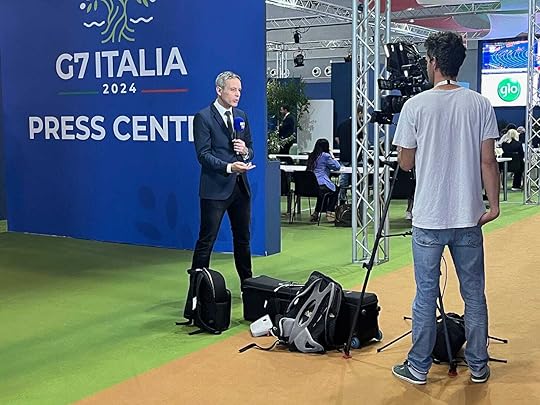
Three football fields large, this venue is located in Bari, about an hour’s drive from Borgo Egnazia, where the leaders are meeting. Summit organizers have tightly controlled access to media briefings through limited press pool cards which get you on the bus and out to Egnazia.
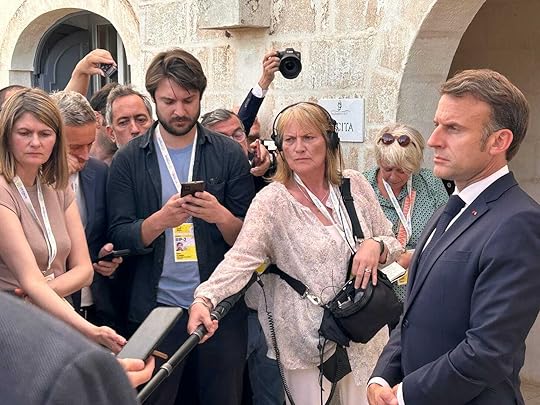
Meanwhile, the rest of us work away in the media centre at tables, or in the broadcast area, or doing stand-ups (tv journalists talking directly to camera) and interviews.
When we’re not working, we’re eating and drinking, collecting our swag, or visiting trade booths for free samples. In Puglia, this is primarily agriculture, given the region is a top producer of bread, pulses, veggies, olive oil and wine. And if all that grazing gets too much, there’s always games or lounging to be had.
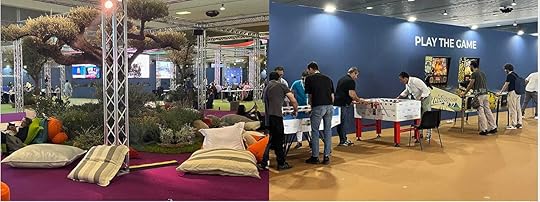
The best part of being here though, is hearing the briefings directly. It’s always a surprise to then read coverage of the same event which contains different conclusions from your own, like this pneumatic Guardian article. A reminder just how personal all reaction is.
The Books and Films of the G7.My last summit was Gleaneagles, Scotland. The first day of the summit, four coordinated suicide attacks targeting morning commuters ripped through London, killing 56 people. The deadly event sent seismic shocks through the summit.
Meanwhile, anti-poverty and anti-globalization activists from all over the UK and world, spurred on by Bob Geldof and others, immobilized the city, drawing the ire of ordinary Edinburgh residents, who wanted the entire circus – the massive security presence, the politicians and the activists – to get out the hell out.
I recently re-read The Naming of the Dead by Scottish novelist Ian Rankin, which delightfully skewers the politicians, activists and security alike, while weaving a top-notch murder story throughout. Highly recommended.
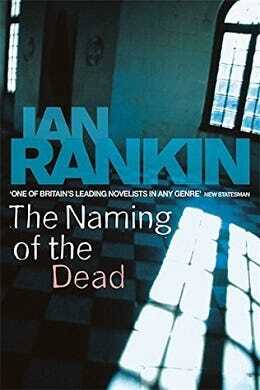
Then there’s the Emmy award-wining movie, Girl in the Café, set at a fictionalized G8* Summit in Iceland (Iceland was never part of the G8 and could never host a summit, but hey, it’s the movies).
Starring Bill Nighy, this romantic drama written by famed writer Richard Curtis was essentially a propaganda piece aka communications strategy by the British summit organizers, released just days before that same Gleneagles summit.
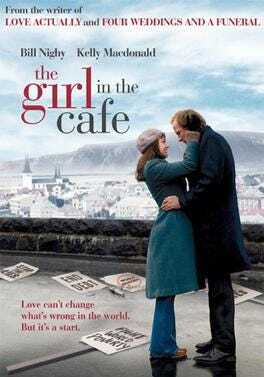
The film incorporates the agenda priorities the British set that year, including Make Poverty History’s ‘a child dies every three seconds’ by shifting story beats every three seconds in a scene where the issue is discussed.
The movie’s best line, though? When Nighy’s love interest says, ‘you got to sit beside the most boring person here’ – aka the Canadian prime minister 😎
*The G7 was the G8 before Russia was suspended from the group in 2014, following their annexation of Crimea.
Thank you for joining me for this twenty-nineth edition of Letterbox .
Please see earlier editions of Letterbox: Bread and Circus’s Part 1; Puglia, and Matera, Italy.
I stayed in Rome enroute to Bari and had some very informative walking tours which I’ll write about next. Ciao for now!
April 22, 2024
The Stagecraft of Life.
Last month I spent a very happy week in LA, staying for the first time east of the Los Angeles River and downtown, in a community called Montecito Heights. Overlooking the mountains, the apartment offered stunning sunsets:

The area was home to the Gabrielino Indians for more than two thousand years, then controlled by the Spanish in the late eighteenth century, with Mexican and American ranchers taking control of the land for much of the following century.
The many distinct communities that make up the Eastside and North East LA were established as ethnoburbs in the late 19th and early 20th centuries – for example, the Italians in Lincoln Heights, the Eastern European, Jews and Japanese in Boyle Heights. Both communities subsequently developed to be very much at the heart of LA Latinx culture, as has much of the Eastside.
It was on the streets in 1970 that the The National Chicano Moratorium protests took place, when 20,000-30,000 demonstrators protested the disproportionate number of Mexican-American troops killed or injured during the Vietnam War.
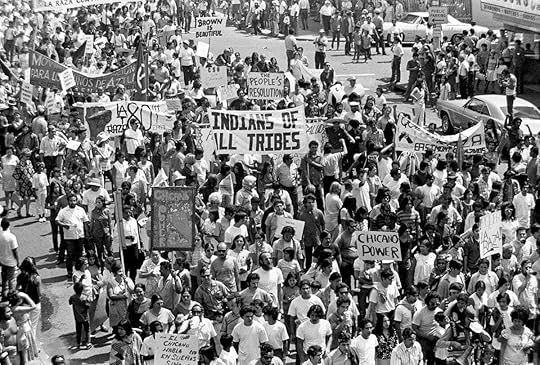
It was also here that the 1988 crime movie Colours, starring Sean Penn and Robert Duvall, was filmed. Gang members were hired as security and as extras, with two of them shot on-location. (Infamously, Penn was arrested for punching an extra who had the temerity to take photos of him without permission.)
That year also saw the release of Stand and Deliver by Ramón Menéndez, based on the true story of Eastside high school maths teacher Jaime Escalante, played by Edward James Olmos (nominated for an Oscar for that role).
Nowadays gentrification is a bigger threat than the Crips and the Bloods.
I’ve spent a fair amount of time in LA, either for work or pleasure. But I’d never stayed on the Eastside, and friends, I have to say, I loved it.
From the hipster food havens that are Silverlake and Echo Park, to century homes in hilly Montecito Heights and Mount Washington, to the shops of Highland Park (historically a very important enclave for the artists and intellectuals in the Arts and Craft movement), it was great to explore.
I also appreciated the proximity to tourist attractions I’d never visited before, because the trek was too far from Santa Monica where I’d normally stay.
The Huntington.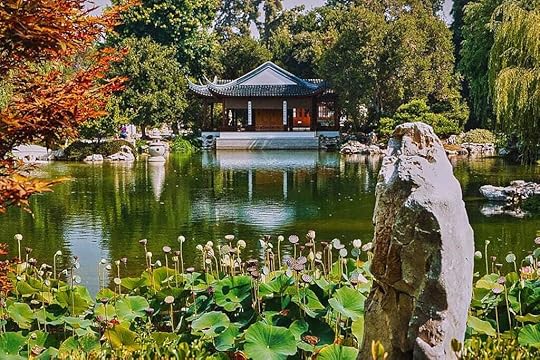
The Huntington Library, Art Museum and Botanical Garden is a stunning 120-acre educational and research institution nestled in the San Gabriel Valley.
The library houses over 11 million rare books and manuscripts including a Glutenberg Bible, multiple Shakespeare and Ben Jonson folios, the papers of George Washington and Thomas Jefferson, a printing of the Declaration of Independence, the Ellesmere Manuscript of Chaucer’s Canterbury Tales, and more. I stood in front of the glass cases, gob-smacked by the proximity to such seminal work.
The Huntington’s sixteen specialized botanical landscaped gardens – including the Japanese Garden, the Chinese Garden and The Desert Garden – also amaze, with their 83,000 plants, greenhouses and labs dedicated to botanical conservation and research.
I found the art collections less impressive although I appreciated seeing Gainsborough’s "The Blue Boy."
The Arboretum.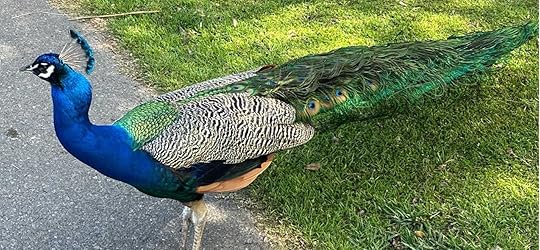
The Arboretum, a 127-acre botanical garden located in what was historic Rancho Santa Anita, also delighted in its multiple themed gardens and greenhouses, the 1885-era Queen Ann Cottage, and the many free-range peacocks!
The vast grounds are ideal for film shoots, and over the decades many TV/film productions have taken advantage of it, including Fantasy Island, the Road to Singapore and Roots: The Next Generation. The day we visited Paramount+ had set up a fake military graveyard for an episode of SEAL Team.
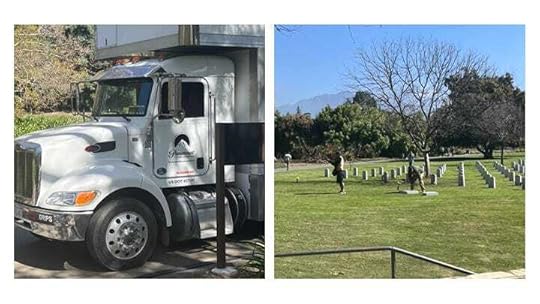 Malibu.
Malibu.My rhythm for the week was to get up early, write for four hours then set off to see friends or have an adventure. One day that included saying hello to the ocean and lunch at Malibu Farm Restaurant.
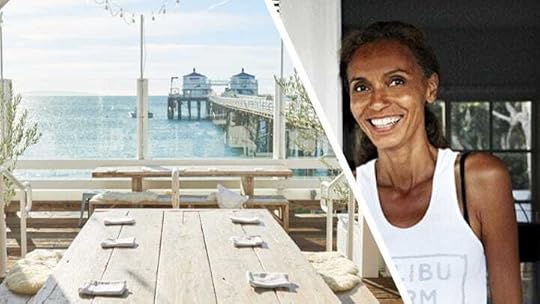
Malibu Farm is an extraordinary success story, started by Chef Helene Henderson, now with locations in Malibu (restaurant + café), Newport Beach, San Diego, Tiburon (Marin County, north of San Francisco), as well as Hawaii, New York and Japan, with more sprouting all the time.
I have both Helene’s cookbooks and adore their local, whole-food plant-based approach, although the restaurant also serves sustainable fish and some meat. Nothing feels more California than to sit on the pier and dig into a hummus and crudité plate full of vegetables grown on Helene’s farm.
Just up the Coastal Highway is the Malibu Shopping Centre, a single level, outdoor collection of stores including fantastic indie Malibu Village Books.
I was so happy to see this shelf of novels nominated for the Carol Shields Prize for Fiction including Janika Oza’s A History of Burning and Anuja Varghese’s Chrysalis, both of whom are alumni of Diaspora Dialogues.
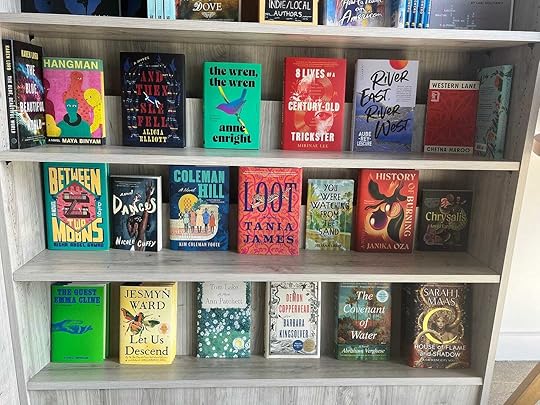 Downtown.
Downtown.The current level of homelessness in LA is shocking, with an estimated 75,000 people without shelter on any given night. That people remain unhoused in any wealthy place feels inconceivable, and to see block after block of tents or people living in cars or under tarps is to bring it home in a very visceral way.
Ironically, there was a film production team pulling their equipment out of a skid-row hotel as we walked by.
On the one-hand, it seemed authentic to use the very locations the show is about. On the other it seemed exploitative, for the same reason I didn’t take any photos – these are people’s lives, not a gaping or educational opportunity.
While downtown, we visited The Last Bookstore, LA’s largest book and record store. Part community hub, part bookstore, there’s a DJ spinning tunes, couches to hang and read or listen, a café, as well as communal shops and a chill vibe.
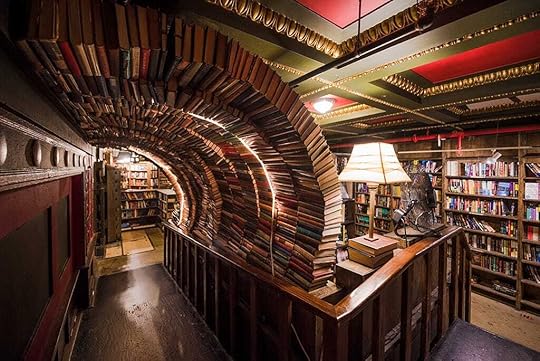
Some people love to hate on LA, stereotyping it as a vacuous movie town, but of course there’s a real city underneath, home to 4 million people. Not to mention a great indie filmmaking and literary scene, including bookstores such as Skylights Books, Vroman’s, Larry Edmund’s, Tia Chucha’s, and Diesel (currently for sale if any of you are looking for a new stage of your life plan. . .)
Museum Mile: The Academy Museum + LACMA.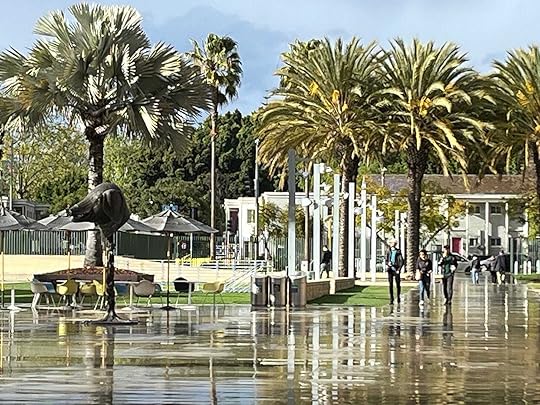
Traffic willing (which means almost never), it’s only a short drive from Montecito Heights to museum mile in downtown LA.
This stretch of Wilshire between Fairfax Avenue and La Brea houses the Academy Museum, the Craft Contemporary Museum, La Brea Tar Pits (fossilized saber-toothed cats, mammoths, dire wolves, and mastodons, among others), the Petersen Auto Museum and LACMA (the Los Angeles County Museum of Art).
The Academy Museum provides a fascinating look at the history of film. One special exhibit currently running is John Waters: Pope of Trash.

It’s the first comprehensive exhibition to profile Waters’ filmmaking, key themes and styles – that signature combo of high-brow art and exploitation films, plus his later foray into a more mainstream sensibility.
There are film clips, as well as costumes, set decoration, props, his notes and handwritten scripts, posters, concept designs, correspondence, scrapbooks, photos and more. An adjacent exhibit contextualizes his work within contemporary and subsequent film movements.
An homage to a filmmaker that the academy has yet to honor with an Oscar nomination, and whose entire oeuvre rejects the film elitism embodied by the Academy Awards.
Rarely have I seen museum-goers enjoy themselves so obviously at an exhibit, grouped on benches watching the film clips, laughing with abandon. Perhaps feeling themselves seen and understood in his work.
In 2020, Waters donated hundreds of artworks from his personal collection, including art by Andy Warhol, Cy Twombly and Cindy Sherman to the Baltimore Museum of Art. In recognition of the gift he asked they name an all-gender bathroom after him. Classic Waters.
The Danger of Romanticization.John Waters work has been called ‘imperfect cinema’ in its refusal to offer up a shiny, packaged version of life, instead embracing the bleak and the strange. Nothing irks him quite like others telling him what’s appropriate, his startlingly original work a cri de coeur against the tyranny of good taste and accepted opinion.
“If we can get our enemies to laugh, we can get them to listen.”
In Canada, the federal government has proposed a draconian new law whose purported intent is to combat online hate speech, a very important goal. But the over-reach is shocking, ‘Orwellian’ according to Margaret Atwood. It would include an amendment to the criminal code to make an offence of speech punishable by life imprisonment, where secret hearings can be held not bound by any legal or technical rules of evidence.
Cue the Stasi.
“What is the freedom of expression? Without the freedom to offend, it ceases to exist.”
Salman Rushdie’s question has been often been on my mind the past year, between the surge in book banning, Rushdie’s own recent memoir KNIFE, campus protests and opposing accusations of censorship, and the controversy tearing apart PEN America about what should be that organization’s reaction to the horrific situation in Gaza.
I don’t have a definitive answer to any of it – and neither do you.
I reject the notion there is one objective truth, one acceptable narrative, that seeing complexity is inherently complicit. But simultaneously I believe that real change happens along a continuum - that you need protestors in the streets as much as you need change-makers inside institutions and those writing thoughtful analysis after the fact.
A Tamil scholar and translator said to me recently that we must be careful when presenting narratives about violent conflicts to offer context but not to romanticize them.
As an Irish citizen, I am very conscious of the truth in her statement. The vicious murders and intimidation by the IRA during The Troubles is as indefensible as those by the British, not to mention their later devolvement into a criminal enterprise that traffics drugs, guns and women and murders journalists.
I suspect history will evaluate our current period as epochal, poised as we are amidst deep divisions about what it means to be a citizen in this world. Or maybe not. Perhaps I’m just not old enough yet to appreciate the full sweep of history; perhaps this moment is no different than the thousands of years of humankind’s failing – and trying again – that have come before us.
I don’t know. But I do hope together we can lurch towards dialogue over diatribe, seeking to understand if not agree with each other’s positions instead of flinging value judgements. Because that seems the only sustainable path forward, in the absence of some giant Vulcan mind meld where we suddenly all think as one.
Bye for now. Thank you for joining me for this twenty-eighth edition of Letterbox . Stayed tuned for my next newsletter about art in the City of Brotherly Love.
If you’re travelling to LA, check out my website for a fuller list of what to do and where to eat, mostly focused on the Eastside.
January 29, 2024
In Defence of Bread and Circuses
Ever heard of Anna Maria Island? I hadn’t either until my friend Susan let me in on this secret ‘old Florida’ gem that flies mostly under the radar screen.
That is bound to change with magazines like Travel + Leisure naming it to the 2024 Must-Visit lists, although fingers crossed local council seems determined to preserve its essential unspoiled nature.
AMI is the most northern of a string of barrier islands near Sarasota that run down the gulf side to the Florida Keys. Immediately to its south is Longboat Key, AMI’s anti-Christ with its mega-mansions, gated communities and serial Lamborghinis. Below that is Siesta Key, favourite of the partiers and home to many writers over the years, including famed crime novelist John D MacDonald who I loved to read growing up.
And Casey Key – a smidge south – is home to Stephen King. South Florida’s “languid sleaze, racy sense of promise and breath-grabbing beauty” is apparently irresistible to the scribe.
There are no large condos or hotels to block views of the water on Anna Maria Island. No private beaches. No chain restaurants. There are, however, seven miles of glorious powdery white sand beaches to walk, with turquoise waters and pretty amazing sunsets.

I went to Florida because, let’s be honest, sometimes you want the holiday equivalent of a nice bowl of pasta. Comforting, familiar and nothing that’s going to rock your boat. Roads you can cruise along with your window down listening to Jimmy Buffett’s ‘gulf and western’ songs about booze and sex, knowing you should cringe at some of those ‘70s lyrics. But singing along about your lost shaker of salt, regardless.
Turns out, Anna Maria Island is so much more than easily digestible. And it got me thinking yet again about how travel can shake us out of preconceptions and safely held opinions, if we let it.
The speed limit on this sliver of an island is 25mph, but almost no-one works themselves up to that. A free trolley ferries passengers from tip to tail; there’s also rental bikes and golf carts, nature trails and old-style piers that beg to be ambled along or fished off.
A community theatre group – The Island Players – offers a full season to its residents and visitors. I enjoyed an evening watching that old Agatha Christie chestnut The Mousetrap in its lovely purpose-built theatre, whose enthusiastic embrace by its sold-out audience was moving.
I kayaked a little further north at Shell Key Preserve, an 1,828-acre archipelago that is an extraordinary place to see birds – including two bald eagles that soared above us as we cut across the water – and other wildlife.
For all its shopping malls and wacko politicians, Florida is also abundant with nature, and efforts to preserve it. Thousands of miles of ocean coastline and tidal shorelines, marshes and mangroves, freshwater wetlands and springs. There are massive parks, preserves, trails, bird sanctuaries and wildlife refuges to visit. They make it easy for you to be as active as you want to be.
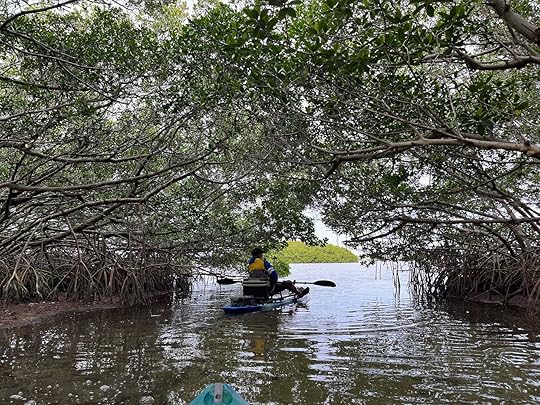
Sarasota is an undisputed cultural centre with theatre, opera, symphony, ballet, art museums and restaurants. It’s also circus country – arguably the single most dominant form of entertainment in America at a time before multiple screens began to compete for our attention.
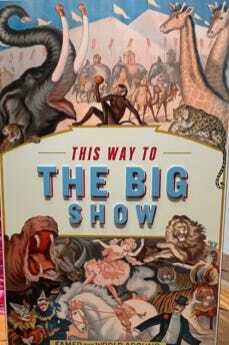
In 1884, the 5 Ringling brothers – Albert, Otto, Alfred, Charles and John – of Bariboo, Wisconsin were determined to start their own circus, at first performing in a vacant lot across from their town’s square, under a homemade tent held up by poles and stakes cut from the nearby woods.
(Circus itself was first brought to the US from the UK in 1793 by John Bill Ricketts. Hachaliah Bailey established one of the earliest American circuses around 1806.)
The Ringling Bros was a great success despite their lack of animals. Instead, they had contortionists, balancers, comedy acts, tumblers, jugglers and lots of music, with the brothers doing most of the performing.
By the following year, they began to tour as the Ringling Brothers: Great Double Shows, Circus Caravan and Trained Animal Exposition, with the addition of a bandwagon, and a museum tent filled with stuffed parrots and a collection of live songbirds and small animals. The show grew quickly: by 1891 they’d expanded the big top to present three rings and were touring by rail.
For almost a hundred years from the 1850s, circus ruled as America’s most popular form of entertainment. It ranked right up there with Thanksgiving, Christmas and the Fourth of July – people emptied onto the street to watch the animals and performers roll into town.
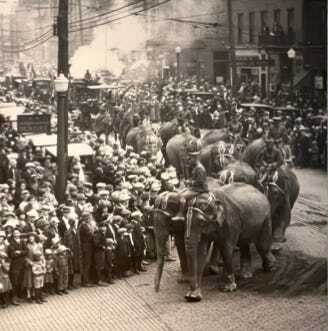
In the 1890s, Barney and Bailey’s “Greatest Show on Earth” was the largest circus. But when James Bailey decided in 1897 to travel his show in Europe for five years, he underestimated the growing popularity of the Ringling circus. Upon his return, he faced a formidable competitor; when Bailey died in 1906, the Ringling Bros bought out their biggest rival.
By 1919, labour shortages and complications to rail travel brought about by WWI prompted Ringling to start touring the two circuses together. It was an enormous undertaking – more than 1,100 employees, 735 horses and almost 1,000 other animals travelling in 90-100 double length rail cars.
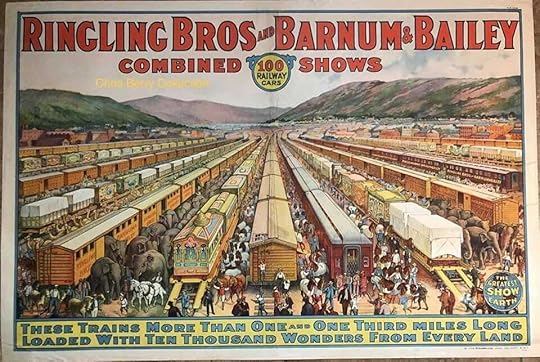
So, why Sarasota? In 1904, John Ringling and his wife Mable bought a private railcar from Pullman they named “The Wisconsin” after his home state. In 1912, the couple first travelled to Sarasota and fell in love with the area. As importantly, John saw enormous potential in the undeveloped state, and bought huge amounts of real estate, which made him a fortune. Others followed suit.
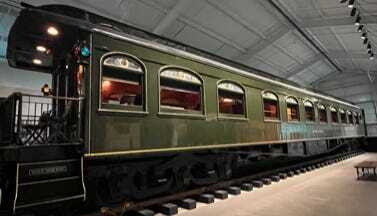
In 1927, they moved the winter home for the circus to Sarasota, an enormous economic boom to the city. They bought a estate on the water and built an ornate 32-room home they called Ca’d’zan (Venetian for ‘house of John’). They also erected a pink Italianate building reminiscent of a Renaissance palazzo to house their extensive art collection (including many works by Peter Paul Rubens, Poussin and Van Dyck) as well as the Astor’s music and dining rooms when their NYC mansion was torn down.
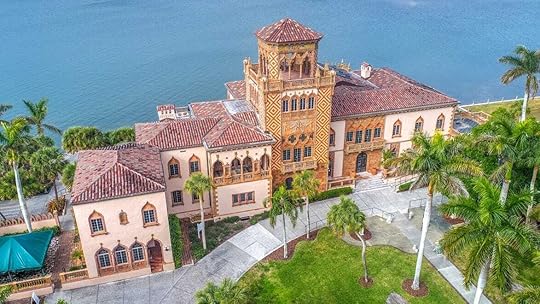
When John Ringling died in 1936, he continued his record of philanthropy to Sarasota by gifting the 66-acre estate and everything in it to the city.
The term ‘Bread and Circuses’ is attributed to Juvenal, a Roman poet active in the late first and early second century AD. People allow themselves to be diverted from important matters, he argued, when given opiates like bread and circus juggling acts to keep them appeased and docile.
Humankind sitting in superior judgement of others is nothing new.
The reality is bread is tasty, and circuses are fun. And popularity carries its own legitimacy. Our 20th century sensibilities recognize the human and animal rights abuses that happened in early circuses, and we should be thankful to the activism that cleaned them up.
At the same time, circus provided a home and sense of family to tens of thousands of performers over the years. It helped ordinary people survive a civil war, two world wars and a great depression, among other world events.
In truth, I’d never thought too closely about circuses before I visited Sarasota and Anna Maria Island. I’d gone once or twice as a child; and as an adult, I often buy tickets to the human circuses programmed into the Edinburgh Fringe Festival. The storytelling artistry and breath-taking physical skills are second to none, and I enjoy them as I would any other kind of physical theatre.
It can sometimes seem these days that we live in a puritanical age where holding a strong or overwhelming opinion somehow equates to objective truth, and thus can never be legitimately questioned. We’ve also seen a distressing return of book-banning and blacklisting, often under the guise of ‘community standards’ or ‘community accountability.’
Everywhere, and in everyone, there is more than meets the initial gaze. Contradictions and dichotomies; the weird and the wacky, the silly and the profound. Thank goodness, yes? To dismiss complexity in favour of rigidity is one reason for this war-torn, challenged world of ours.
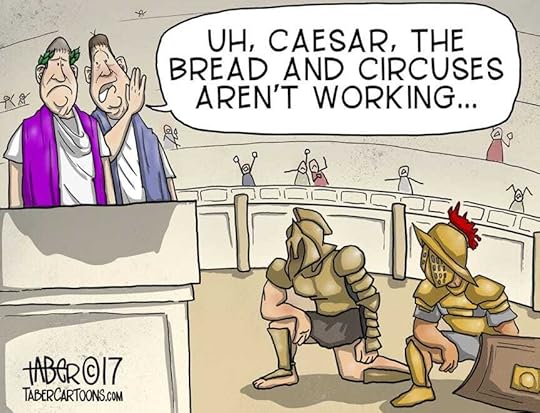
Humans differentiate from other species due to our capacity for nested scenario building, which allows us to imagine several alternative situations and embed them into a larger narrative of connected events. And because we have an urge to connect, to exchange thoughts with others, to achieve more together than we can apart.
So here’s to more bread (preferably whole-grain!) and a circus of riotous and contradictory opinion through which we may challenge each other and grow.
Circus FilmsCecil B DeMille’s 1952 classic, The Greatest Show on Earth, won the Oscar for Best Picture. It starred Charlton Heston, Jimmy Stewart and Dorothy Lamour, along with the real Ringling Bros and Barnum and Bailey’s circus troupe of 1,400 people, hundreds of animals and 50 railroad cars of equipment and tents. The film premiered in Sarasota, at what is now the Sarasota Opera House.
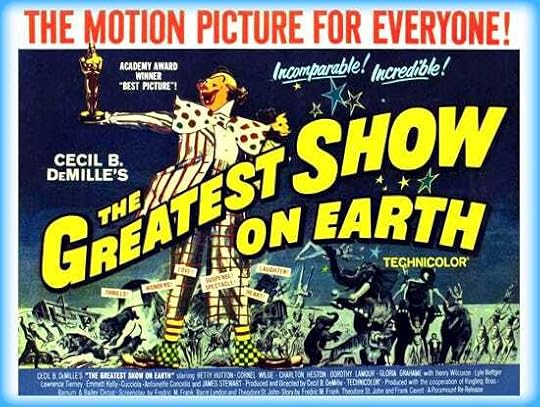
It was the first movie Steven Spielberg ever saw; he credits it as a major inspiration for his film career. The movie got its fair share of criticism, especially winning the Oscar against such films as High Noon, The Quiet Man, and Ivanhoe.
Some argue it won because of the McCarthyite political climate in Hollywood at the time; DeMille was a Republican while the producer of High Noon would soon find himself on the blacklist, as would one of the Ivanhoe writers. Others argued it was the last chance for DeMille to win a competitive Oscar, given his best work had been done in the silent film era. Either way, controversy surrounding the Oscars’ nomination list continues.
Another circus film was the 2017 The Greatest Showman starring Hugh Jackman, Zac Efron, Michelle Williams, Rebecca Ferguson, and Zendaya based on the life story of P.T. Barnum. That film gained a cult following, bofo box office, and nominations and wins at the Golden Globes and Oscars.
**
Reading South FloridaThe wild and weird of Florida permeates every Carl Hiassen book, along with side-splitting humour, eccentric characters and pointed messages about environmentalism, political corruption and over development.
I also highly recommend The Orchid Thief by Susan Orelan, based on her two-year investigation of the arrest of plant dealer John Laroche and a group from the Seminole First Nation for poaching rare orchids in the Fakahatchee Strange State Preserve. Then there’s the strange and wonderful Charlie Kaufman film, Adaptation, where Nicholas Cage plays a fictionalized Kaufman trying to adapt Orlean’s book.
As mentioned above, author John D MacDonald (Travis McGee series) lived on Siesta Key and used local places liberally in his work. Carl Hiaasen says of MacDonald that he was “the first modern writer to nail Florida dead-center, to capture all its languid sleaze, racy sense of promise and breath-grabbing beauty.”
Crime writer Ed McBain lived in Sarasota for many years and set his Matthew Hope series is his adopted city, as did Stuart Kaminsky with his Lew Fonesca books.
And Stephen King – possibly Sarasota’s most famous resident, albeit very private – wrote about a fictionalized version of Casey Key, where he now lives part-time. He first came to Florida to recover from a near fatal accident that left him addicted to painkillers, an experience which clearly influences the novel.
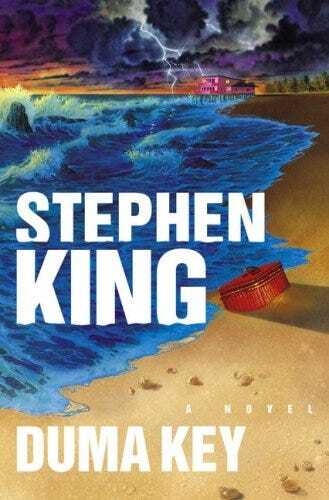
Bye for now. Thank you for joining me for this twenty-sixth edition of Letterbox .



